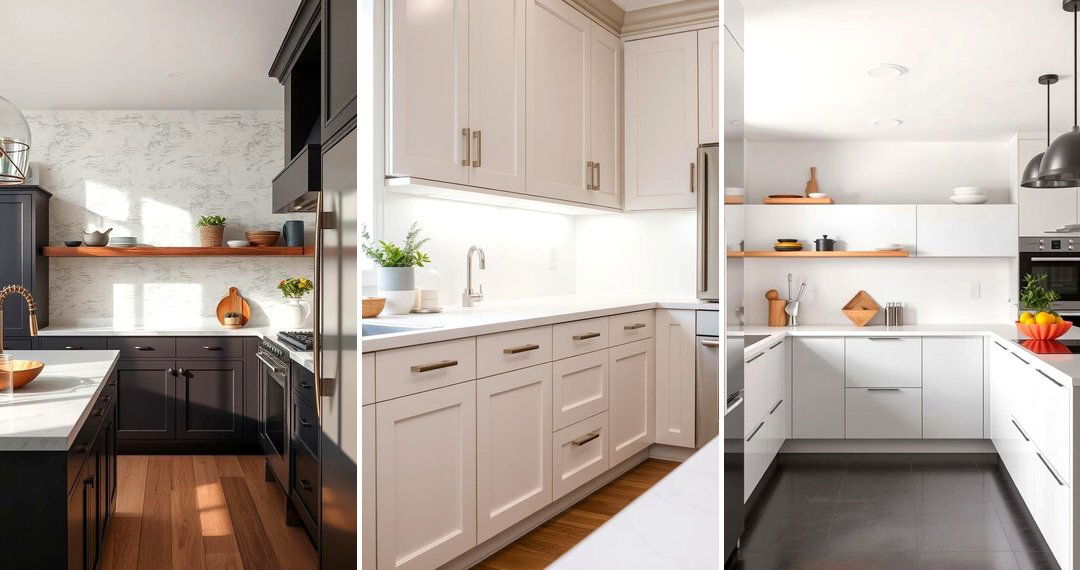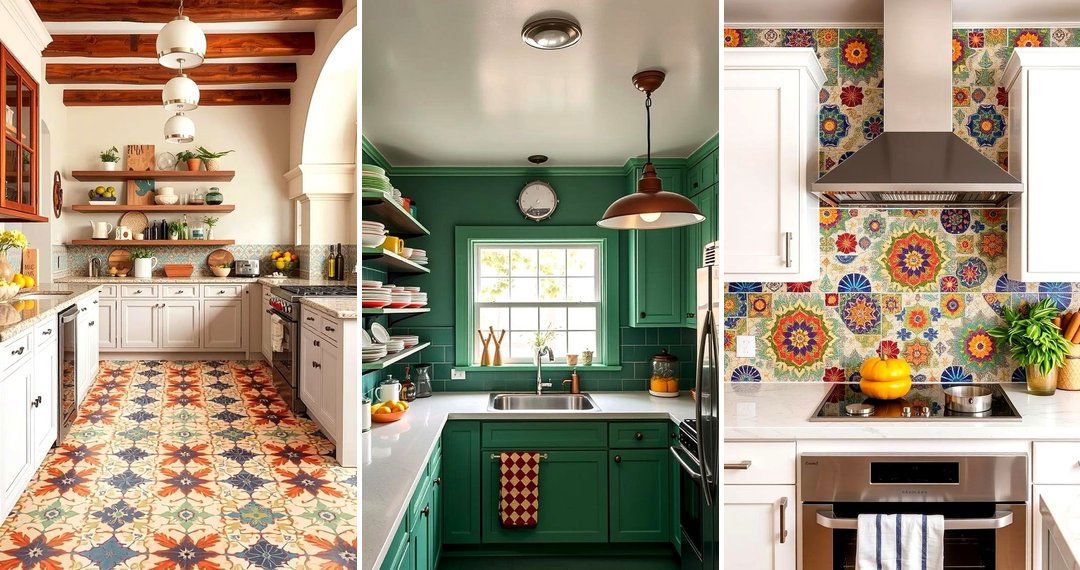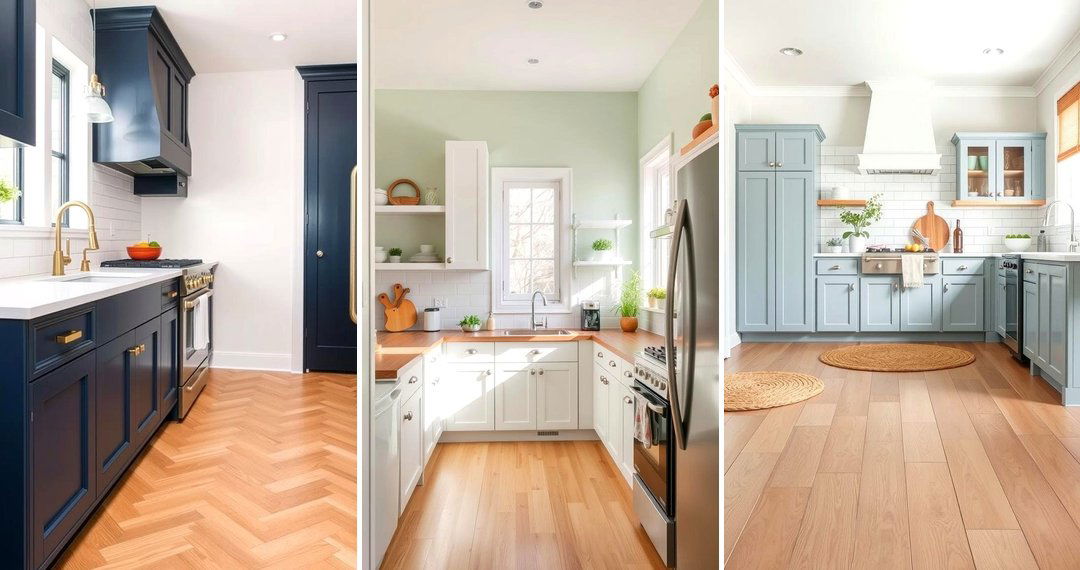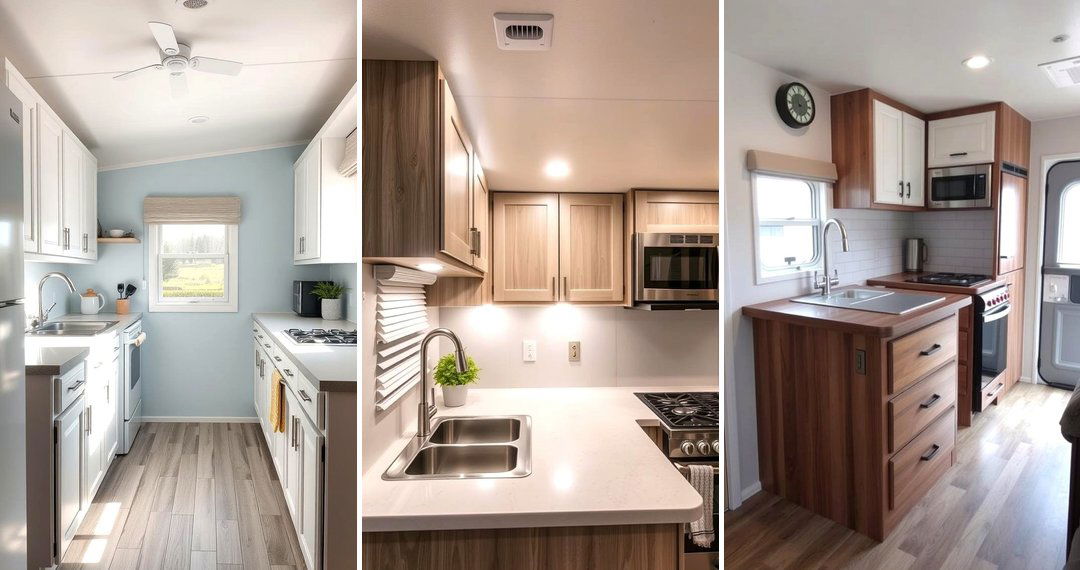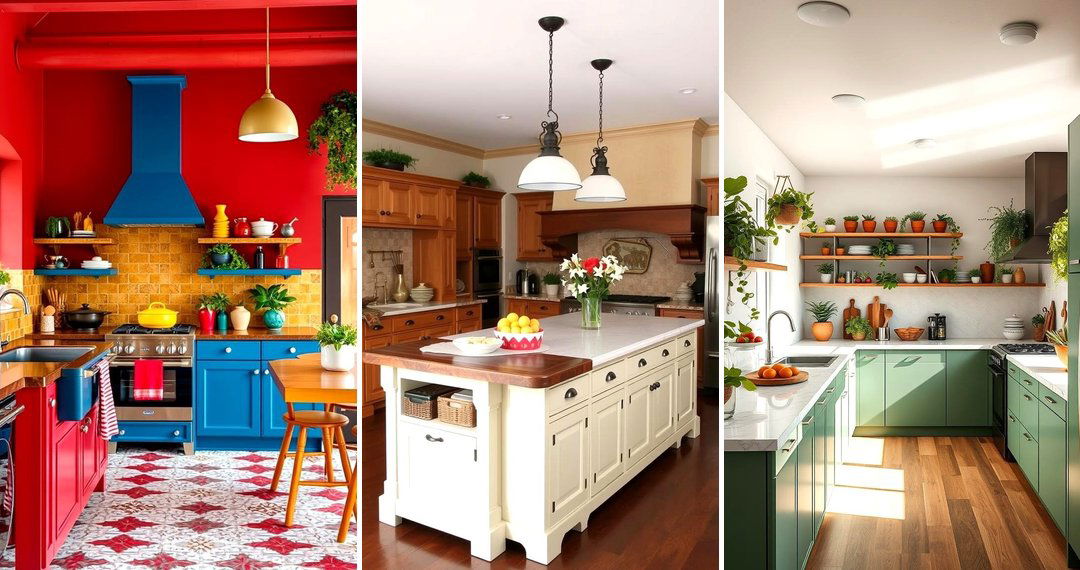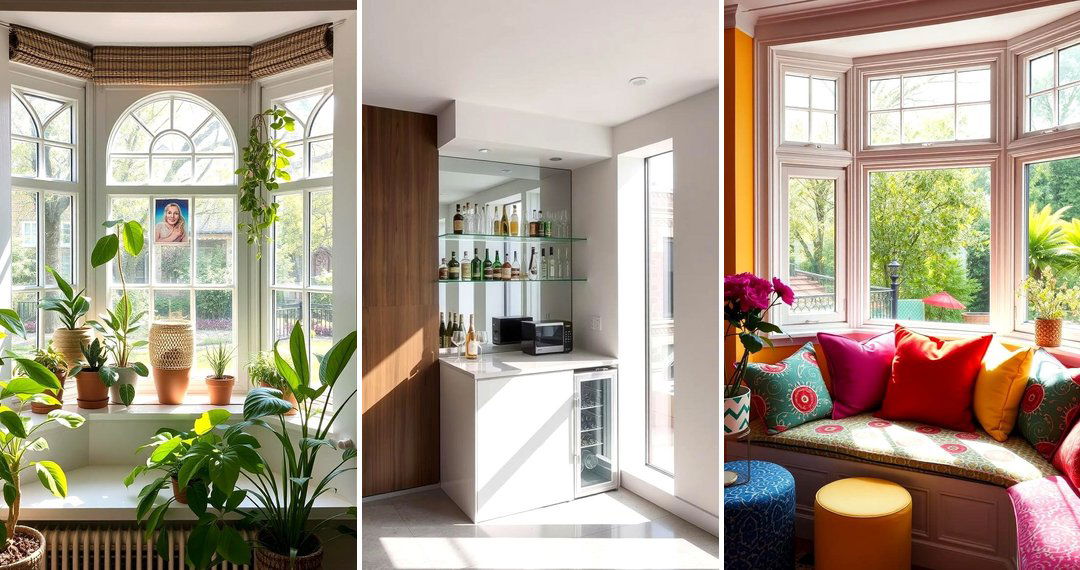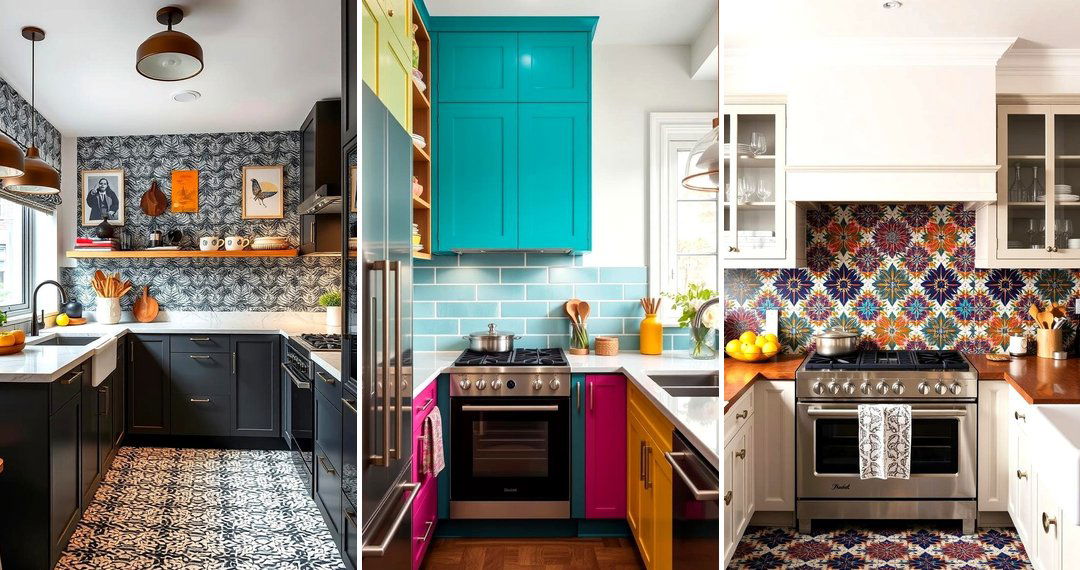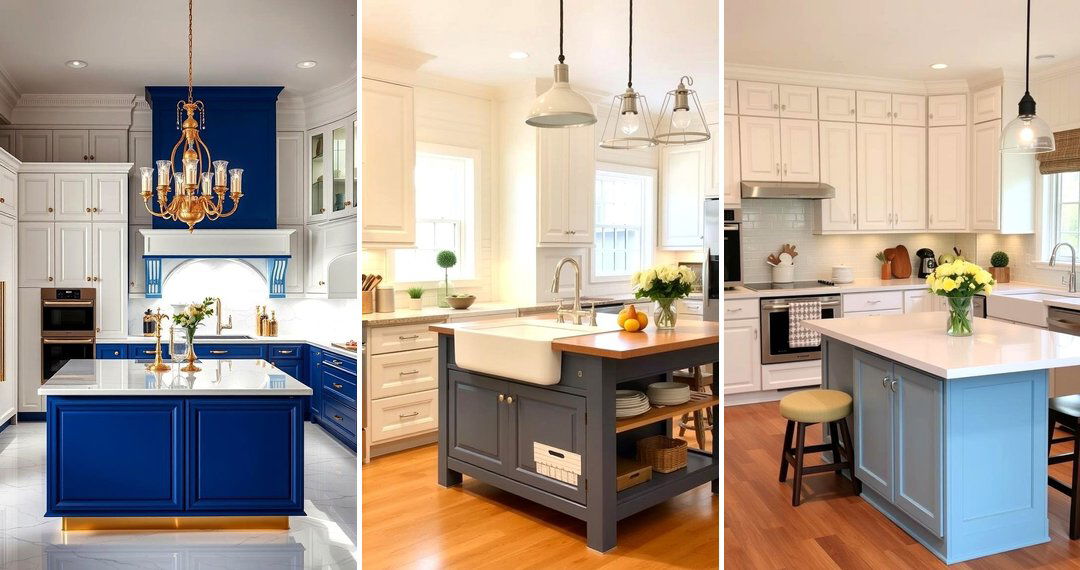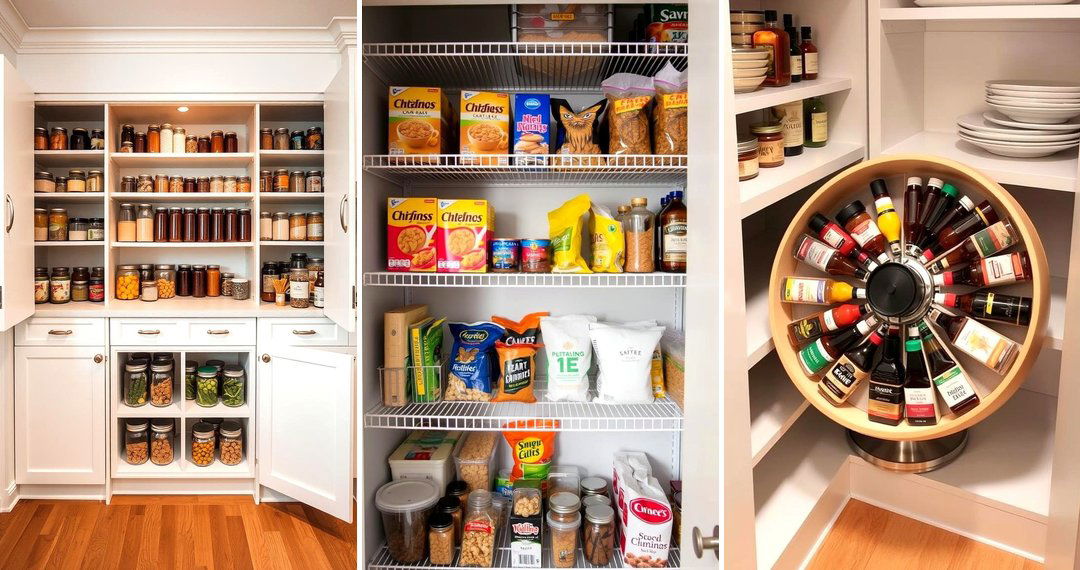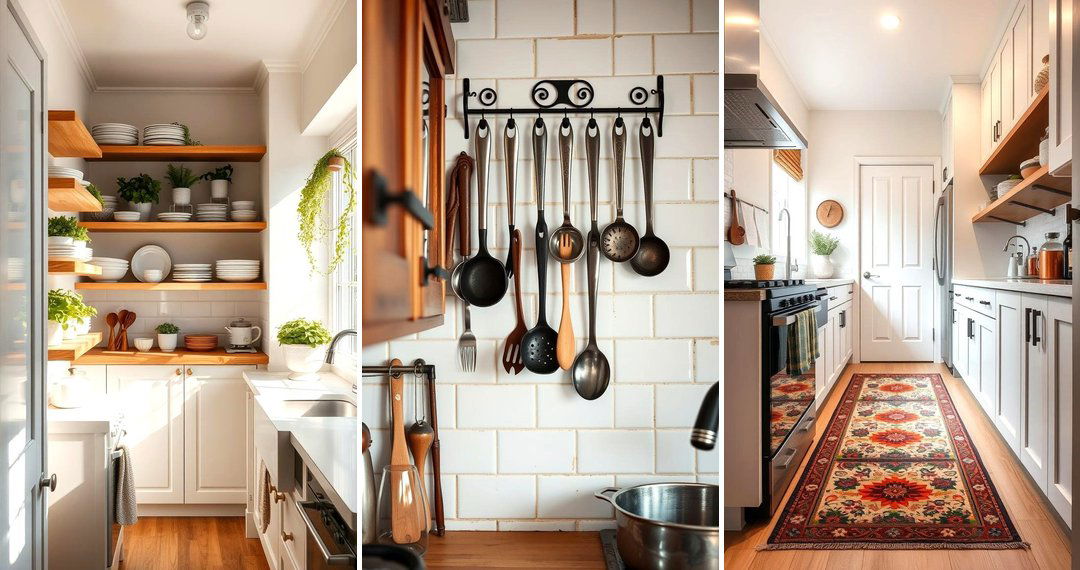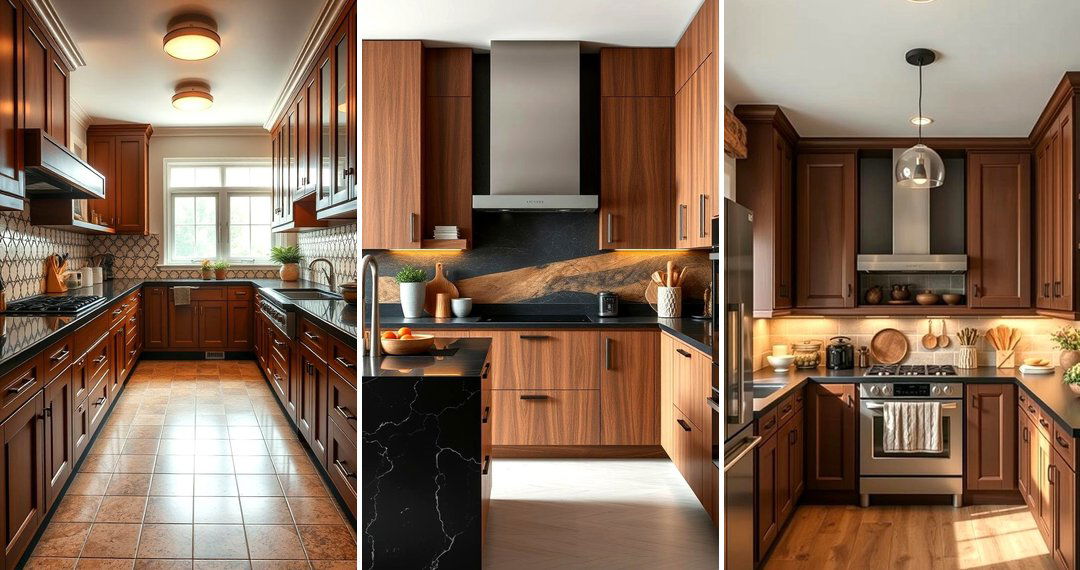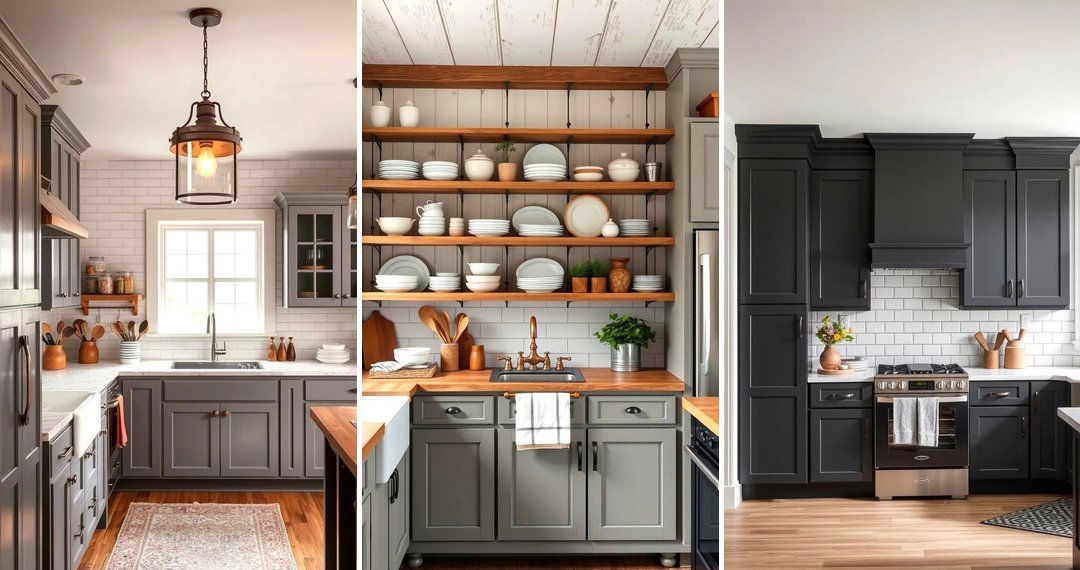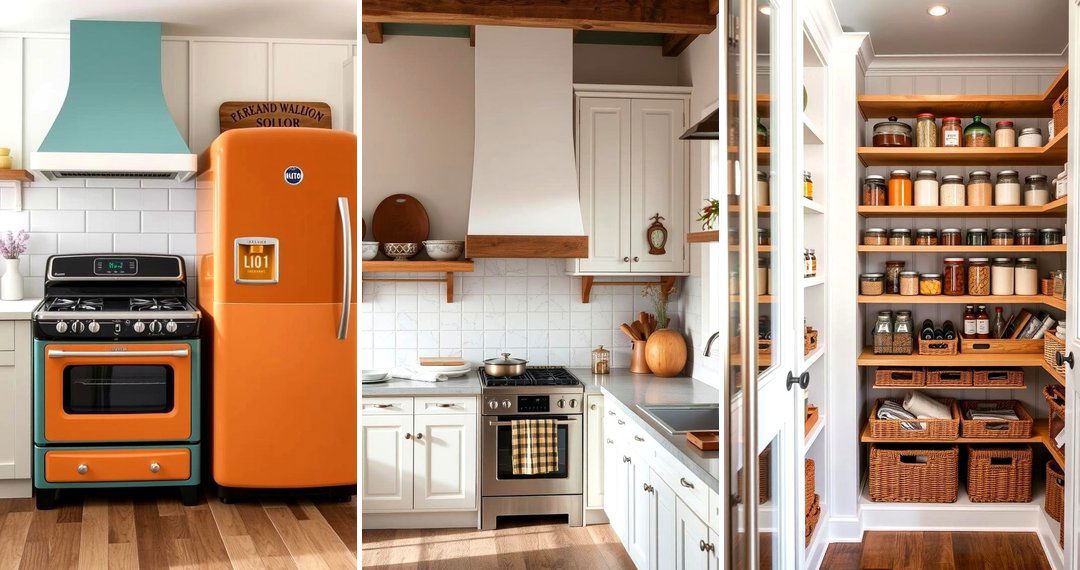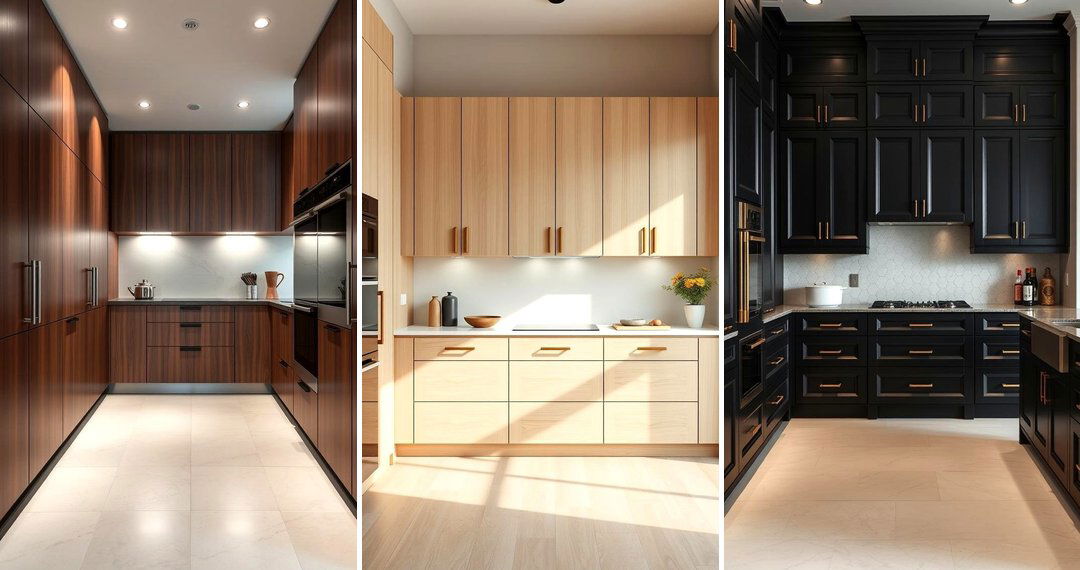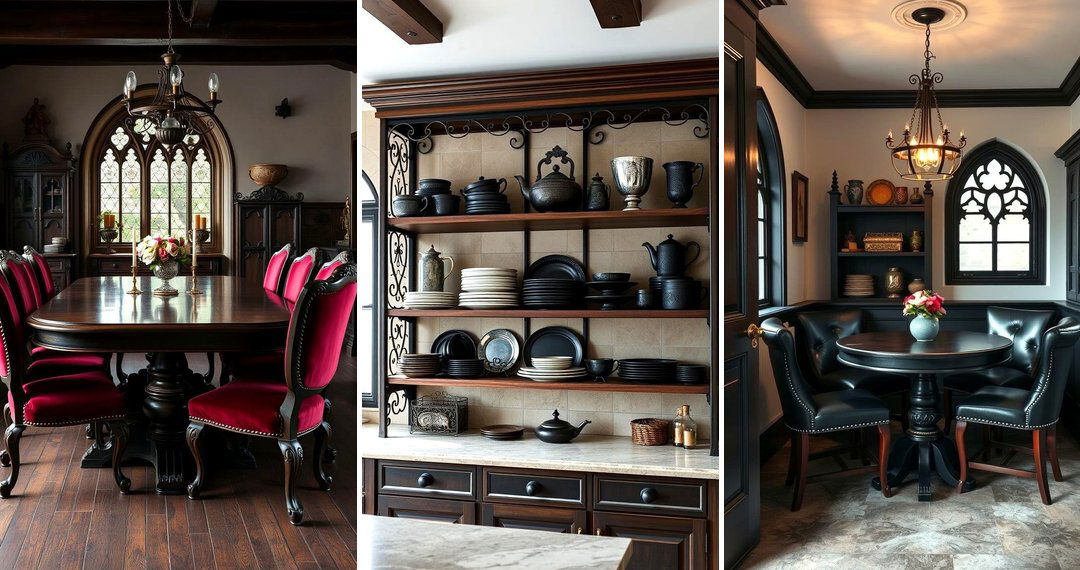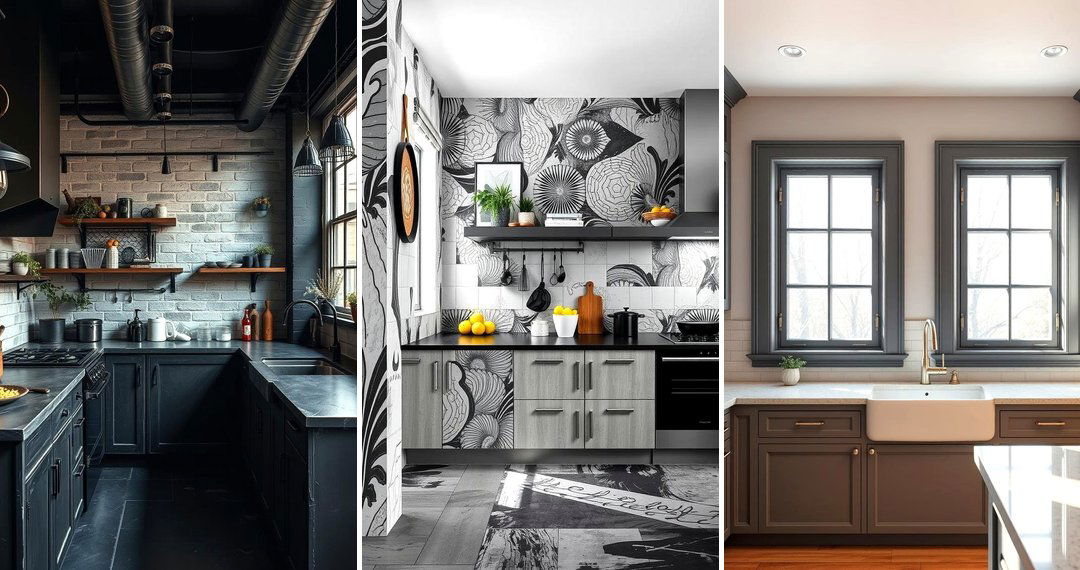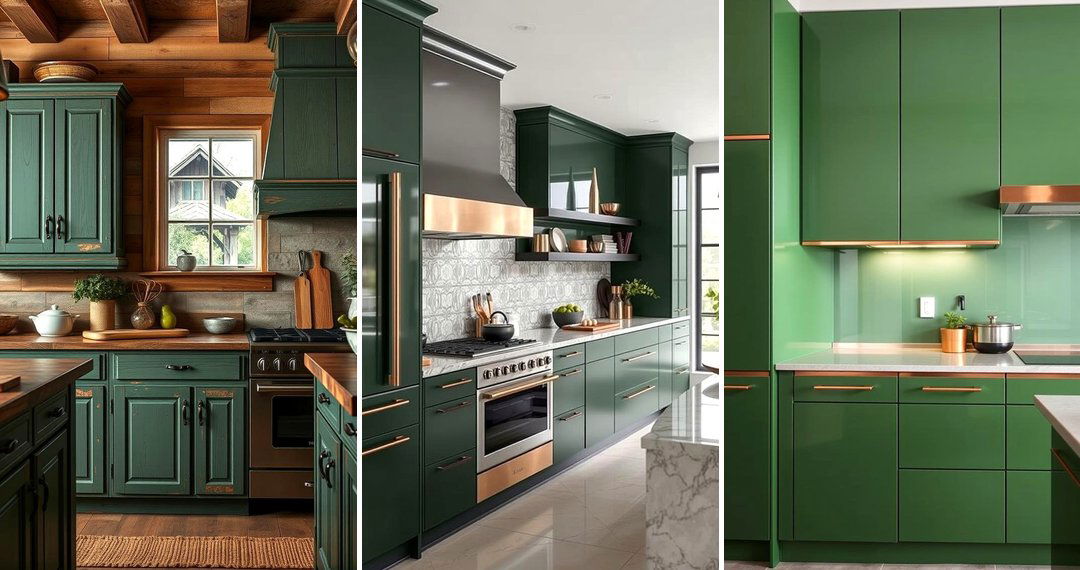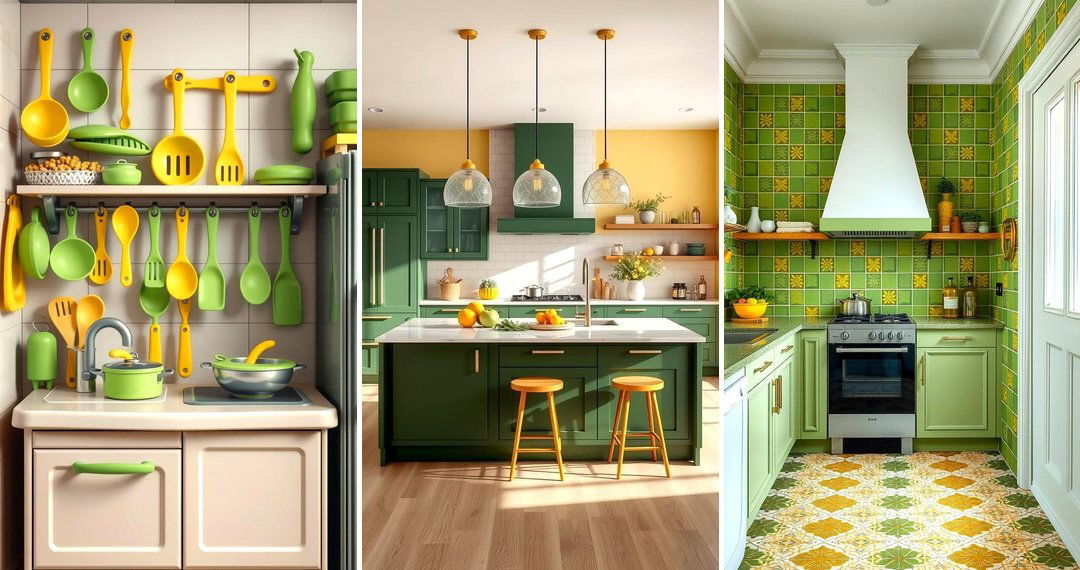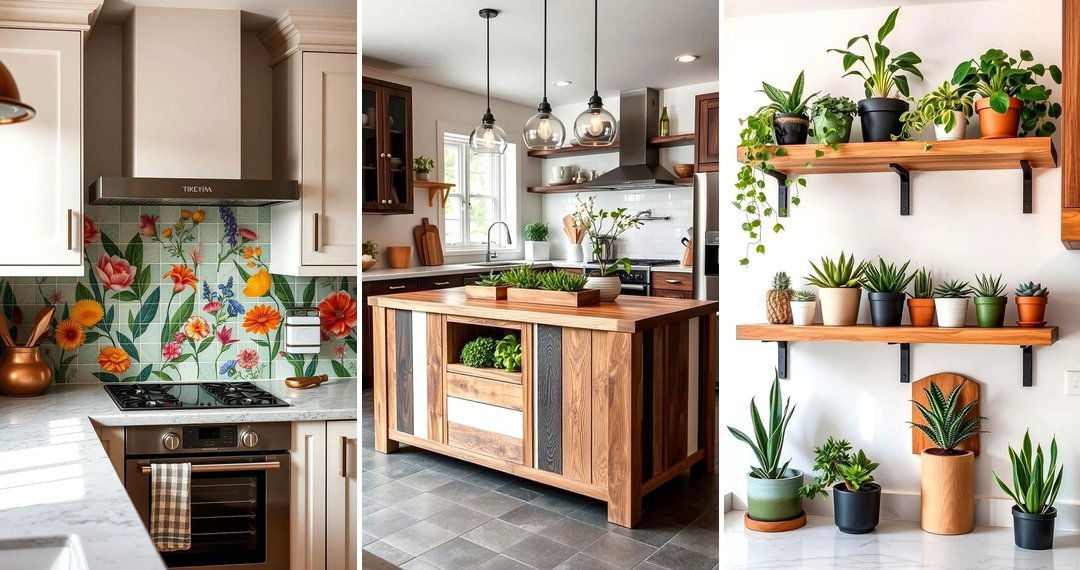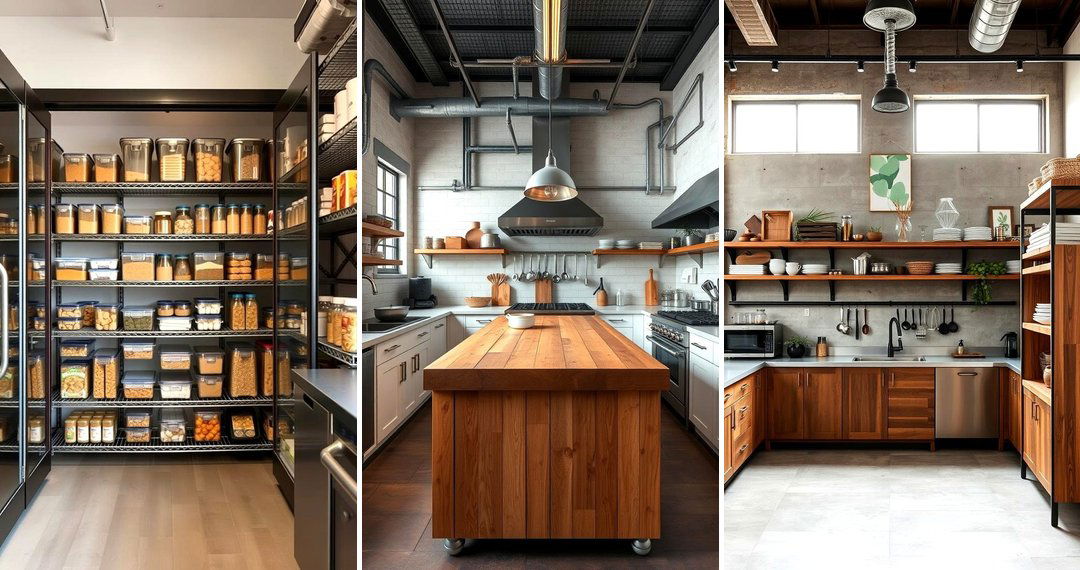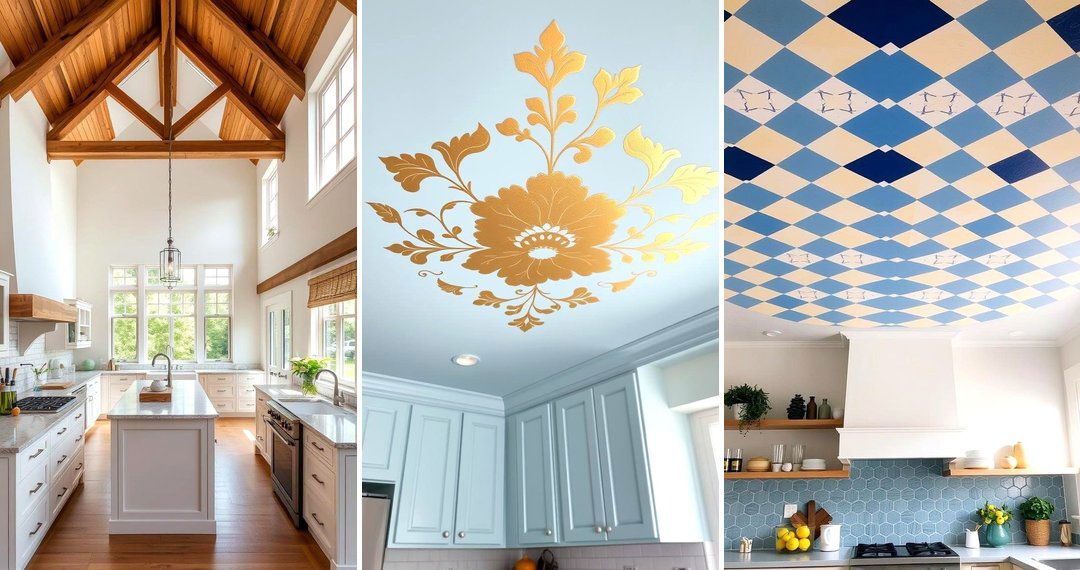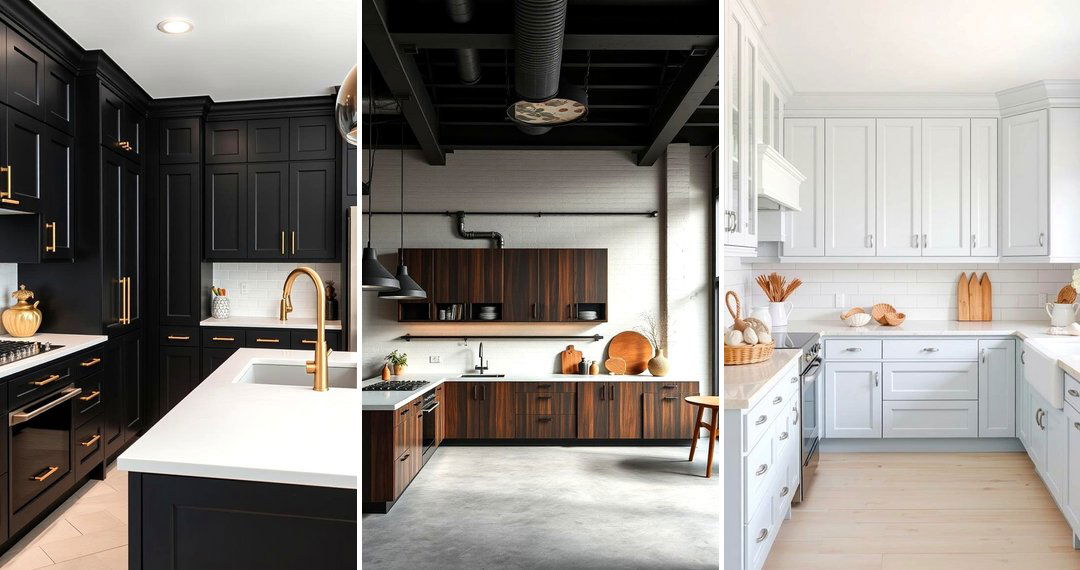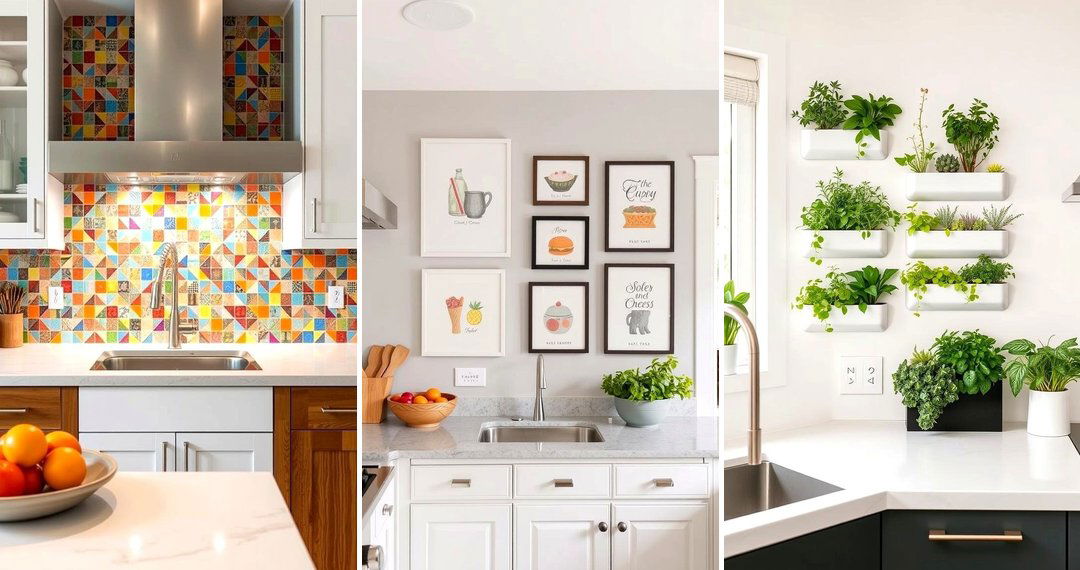Japandi kitchens offer the perfect blend of functionality, simplicity, and beauty. Drawing inspiration from both Japanese and Scandinavian design philosophies, these kitchens focus on minimalism, clean lines, and natural materials, creating a calm and efficient cooking space. Whether you're looking to transform your kitchen with neutral tones, sleek finishes, or integrated natural elements, Japandi kitchens provide a refreshing approach to modern design. With the rise of open-plan living, incorporating these ideas can help you create a kitchen that’s both a culinary hub and a tranquil retreat. Discover how each of these 24 Japandi kitchen ideas can bring peace, practicality, and style to your home.
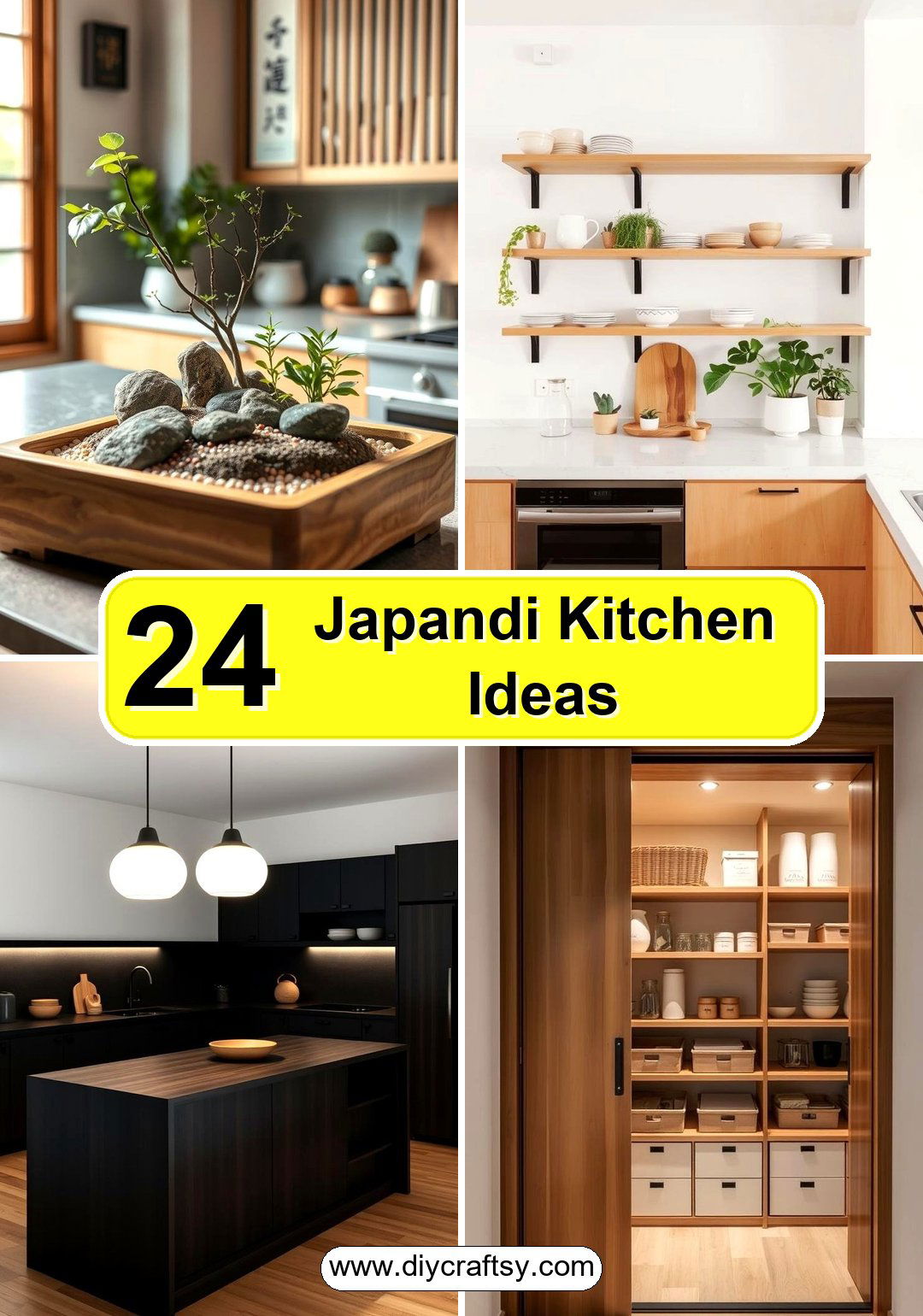
1. Natural Wood Elements
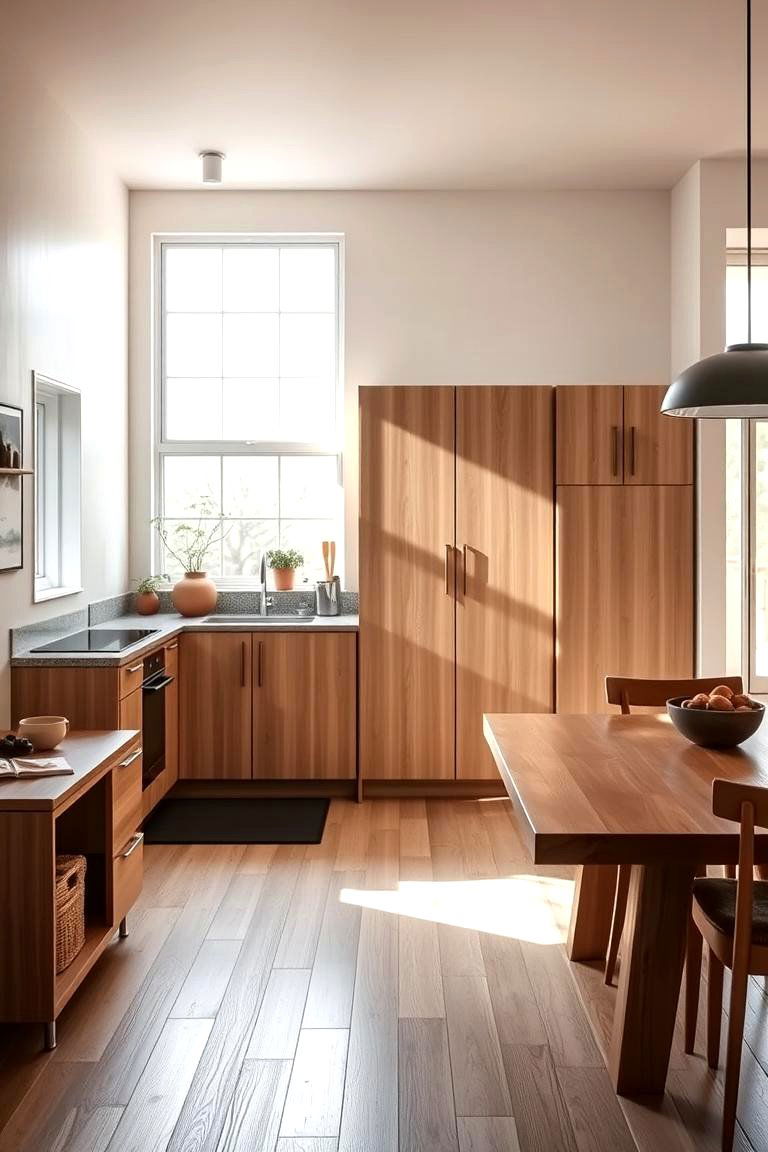
Wooden accents are a signature feature in Japandi kitchens. Consider incorporating wood into cabinetry, shelves, or even the floor to create a warm, inviting atmosphere. The natural grain of the wood adds texture and richness, enhancing the calming aesthetic that Japandi style is known for. A balance of light and dark woods helps to achieve a harmonious contrast while maintaining an uncluttered look.
2. Neutral Color Palette

A neutral color palette is one of the key pillars of Japandi design. Soft whites, muted grays, and earthy tones provide a serene backdrop for the kitchen, allowing other elements like wood or plants to stand out. These colors also have the benefit of being timeless and versatile, easily adapted to various styles and spaces. By keeping the color scheme subdued, you can create a peaceful cooking environment that fosters relaxation.
3. Open Shelving with a Purpose
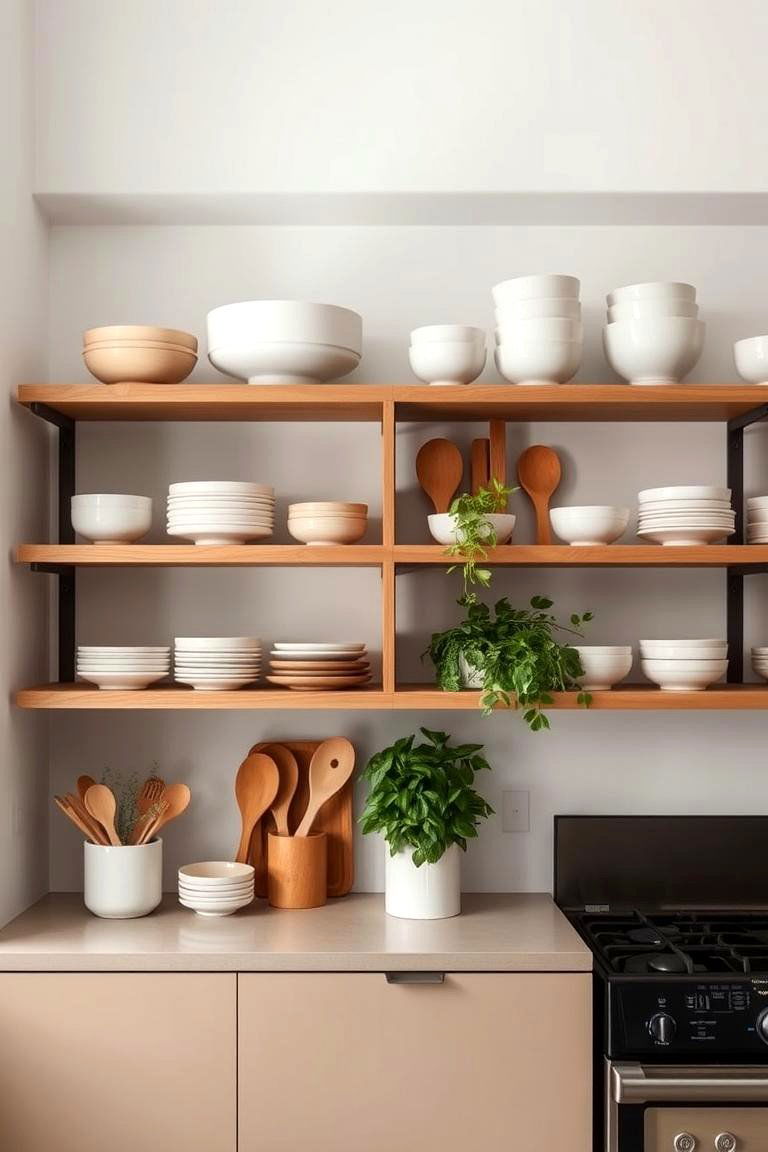
Open shelving in Japandi kitchens is all about intentionality. Rather than showcasing everything in sight, focus on displaying a curated selection of items that bring both beauty and functionality to the space. Simple, minimalist shelving units can create a sense of openness while still providing easy access to essentials. The key is to avoid clutter and keep only the items that truly enhance the kitchen’s design.
4. Integrated Appliances
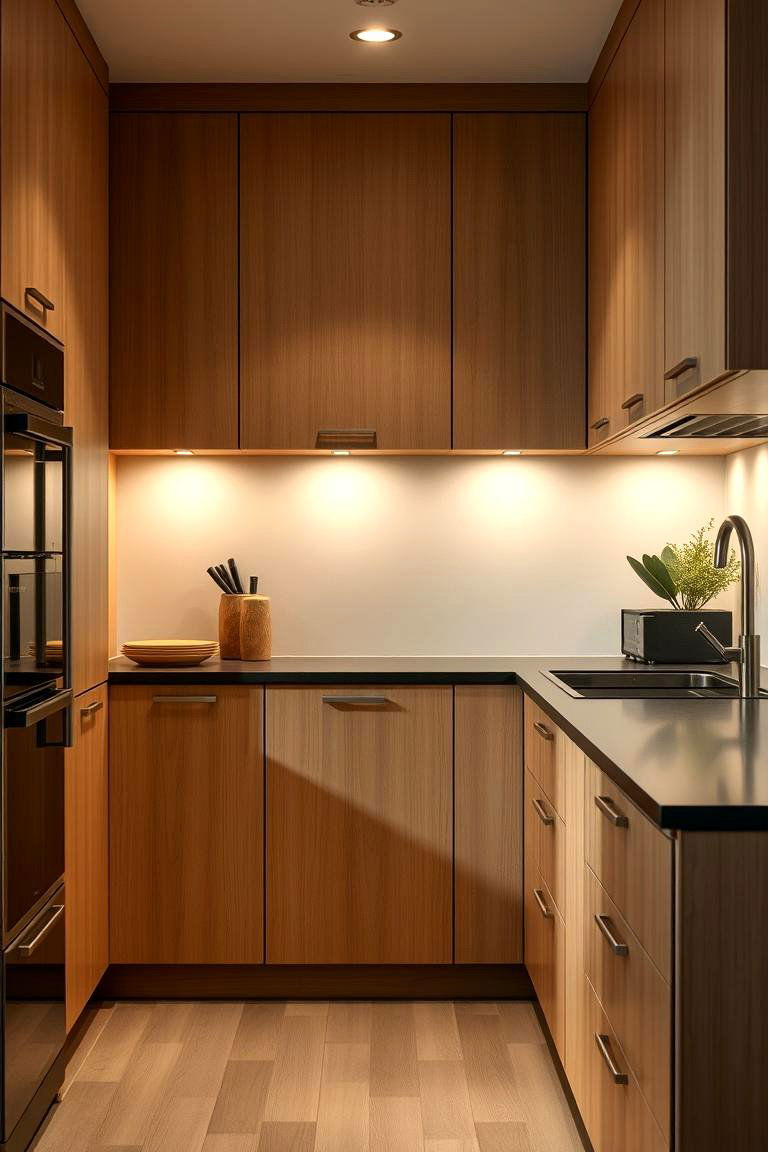
Incorporating integrated appliances is a smart way to maintain a sleek, streamlined look in a Japandi kitchen. Hidden appliances blend seamlessly into cabinetry, reducing visual clutter and contributing to the minimalist aesthetic. This thoughtful approach to design not only creates a more organized space but also adds a touch of elegance and sophistication, allowing other elements of the kitchen to shine.
5. Minimalist Lighting Fixtures
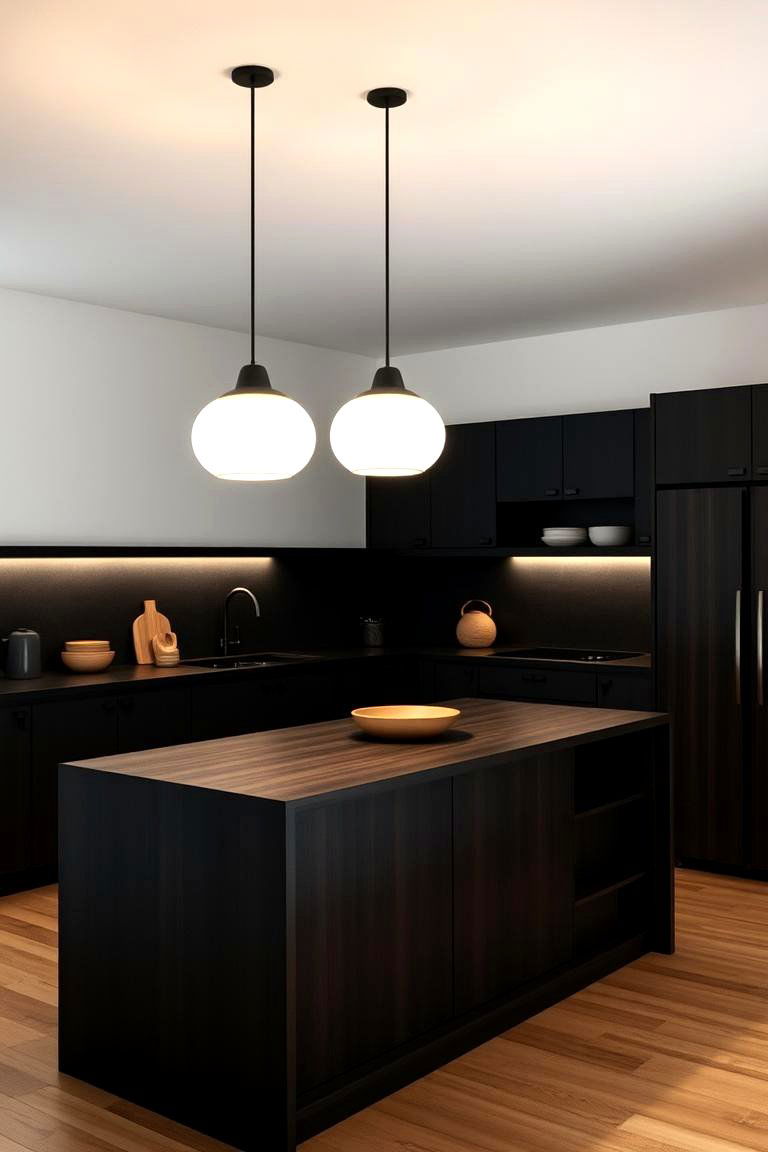
Japandi lighting design focuses on simplicity and elegance. Avoid overly ornate fixtures and instead choose clean, streamlined designs that offer both functionality and style. Pendant lights with matte finishes or recessed lighting options can provide the right amount of illumination while complementing the overall aesthetic. Lighting is subtle yet effective, adding a soft glow that enhances the calm ambiance of a Japandi kitchen.
6. Statement Island
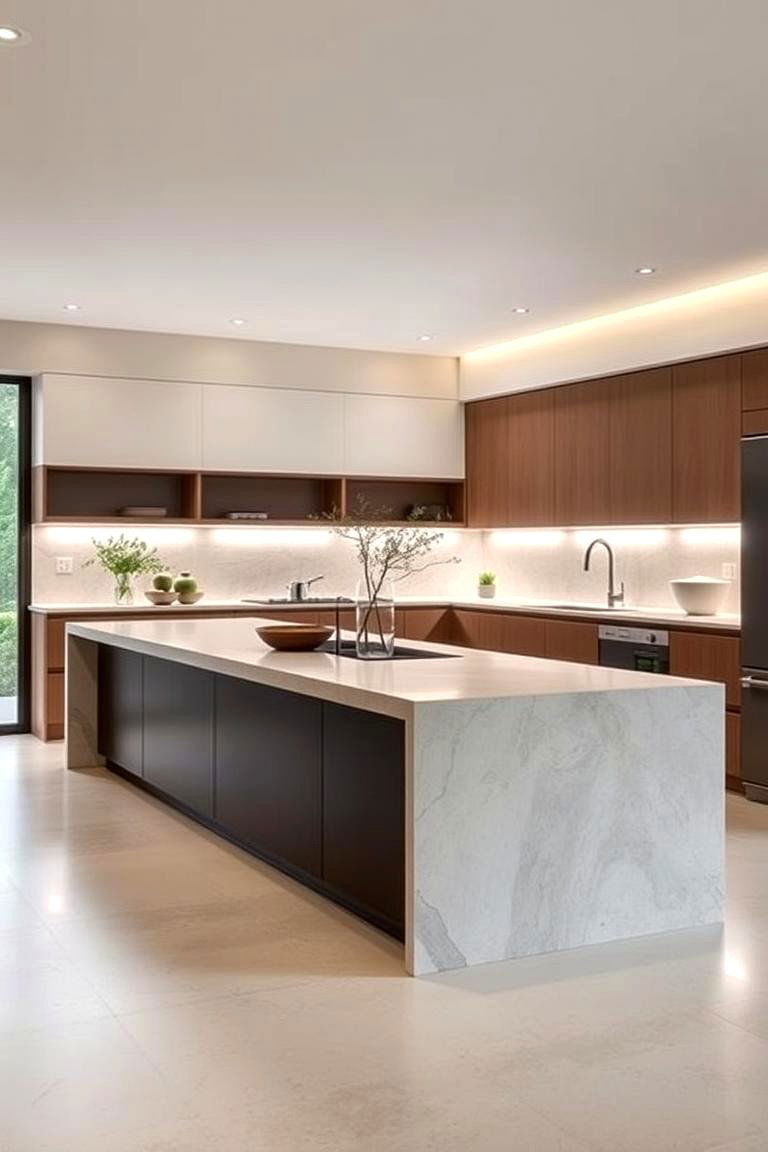
A well-designed kitchen island can serve as both a functional workspace and a statement piece in a Japandi kitchen. Opt for an island that features natural materials like wood or stone, creating a grounded focal point within the room. The island can be used for meal preparation, casual dining, or as a place to gather with friends and family, all while maintaining the kitchen's simple, uncluttered style.
7. Japanese-Inspired Pantry Storage
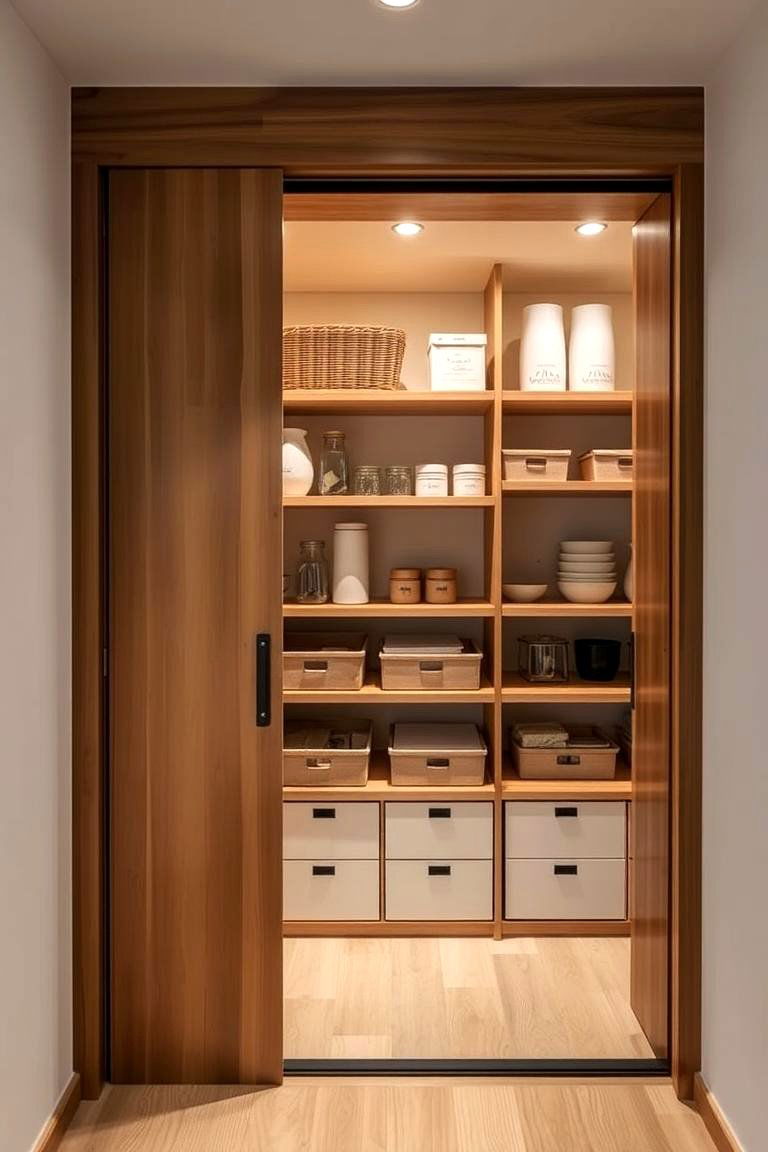
Japanese kitchens often incorporate clever, space-saving storage solutions. For a Japandi-inspired pantry, think minimal and highly organized. Use sliding doors or cabinets with a simple design to create a sleek, concealed storage area. Efficiently storing kitchen essentials ensures that everything has its place, and the clean lines of the pantry add to the overall tranquility of the space.
8. Concrete Accents
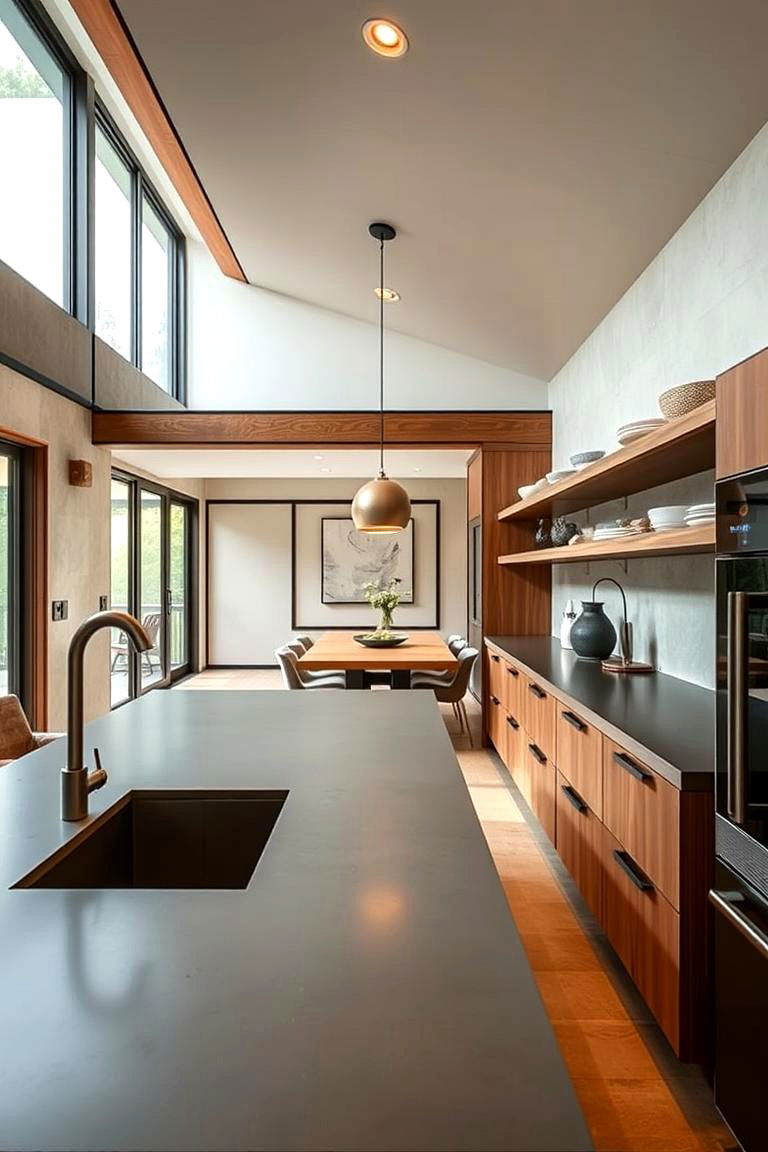
Concrete can add a modern and industrial touch to a Japandi kitchen while maintaining the minimalist approach. Think concrete countertops or a statement wall to bring texture and contrast to the space. The raw, unfinished look of concrete pairs well with natural wood and soft, neutral tones, balancing ruggedness with warmth.
9. Simple, Ceramic Tableware
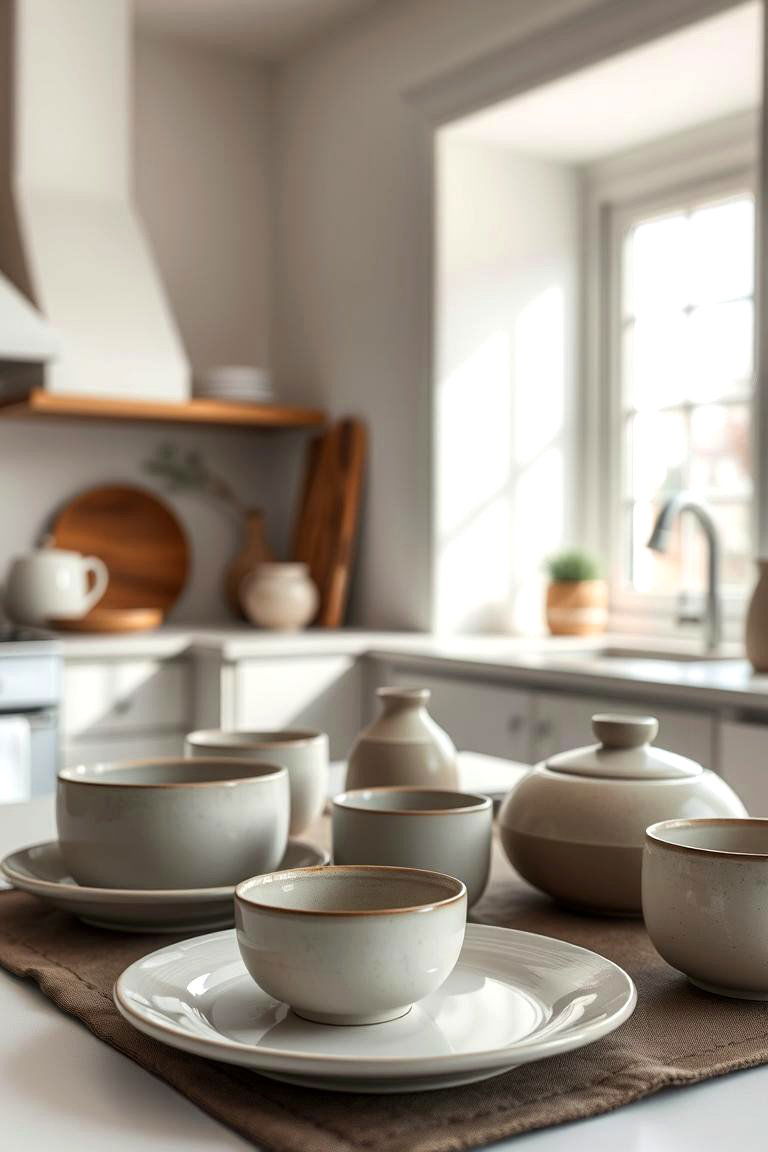
Incorporating ceramic tableware can enhance the Japandi kitchen’s Zen-like atmosphere. Choose simple, handcrafted plates, bowls, and mugs that reflect the natural aesthetic of the space. These items not only add beauty but also reinforce the idea of functional elegance. Their organic textures and muted colors contribute to a serene, purposeful kitchen environment.
10. Zen Garden for the Kitchen
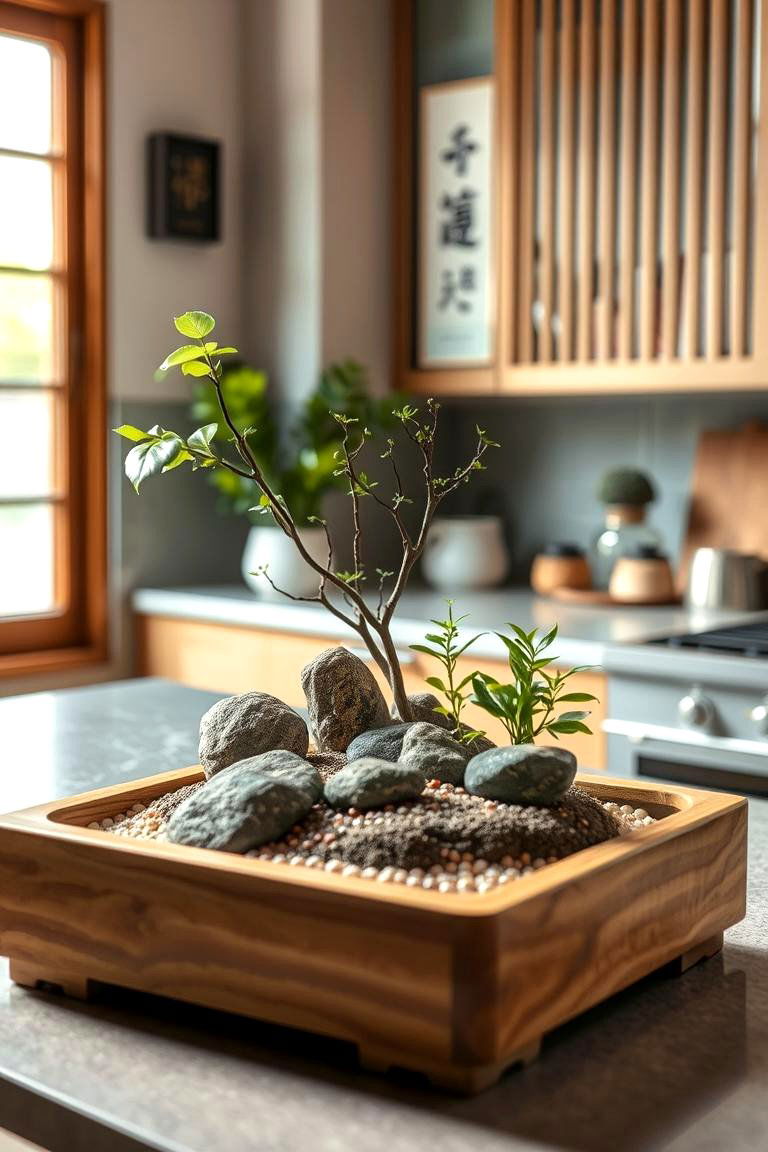
A small Zen garden or indoor plants can bring nature into the heart of the home. Consider placing a mini garden on your kitchen counter or windowsill to add life and color to the space. The greenery will not only purify the air but also promote a sense of calm, aligning with Japandi’s focus on mindfulness and natural beauty.
11. Minimalist Hardware
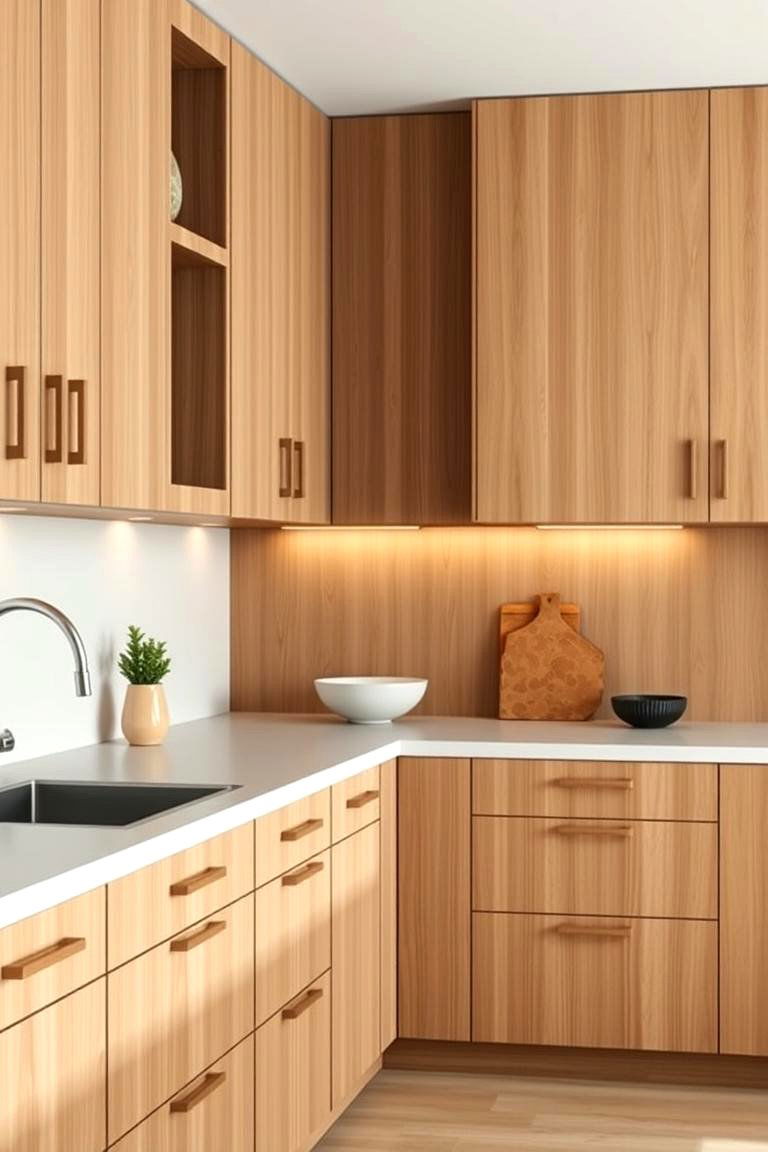
In Japandi kitchens, less is more when it comes to hardware. Choose simple, understated knobs and handles that blend with the cabinetry. Matte black, brass, or wooden finishes are ideal for maintaining a minimalist vibe. By keeping hardware minimal, you allow other design elements to stand out and create a more cohesive look.
12. Sliding Doors for a Seamless Look
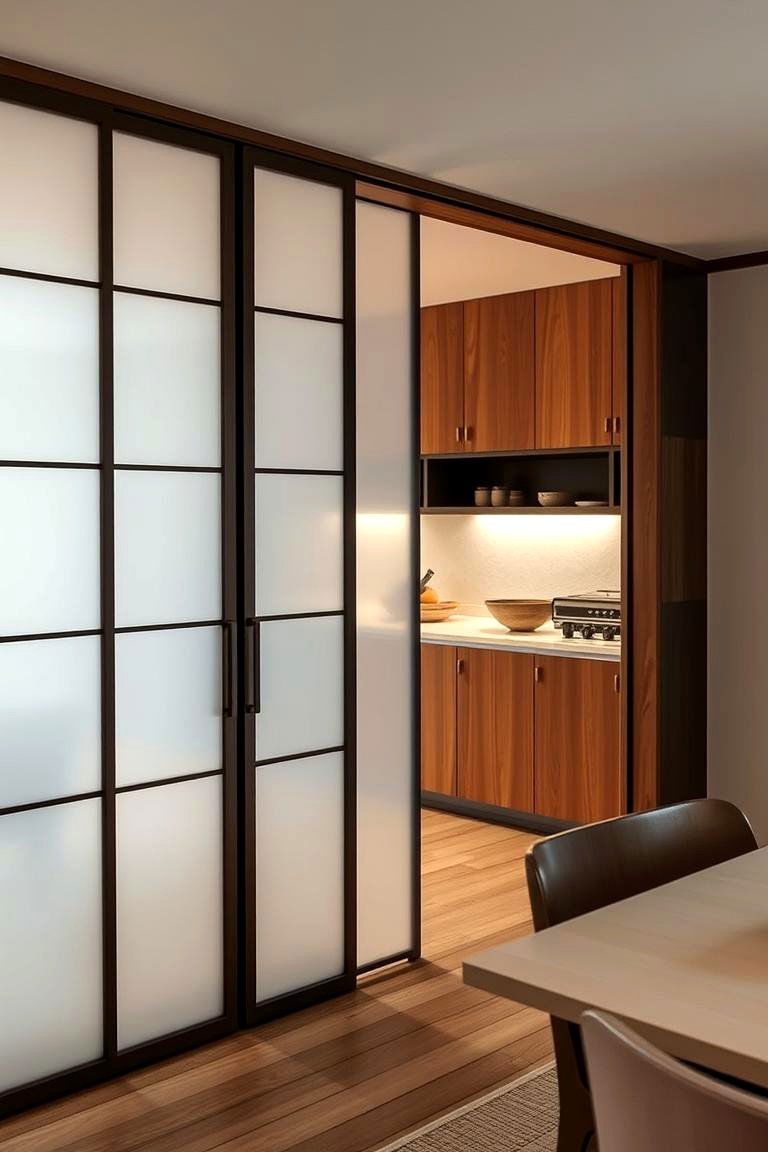
Sliding doors are an excellent choice for maintaining a smooth and seamless aesthetic in a Japandi kitchen. Use them to conceal pantries or separate spaces without interrupting the flow of the room. These doors can be made of natural wood, frosted glass, or simple metal, adding both function and beauty to the overall design.
13. Functional Layout Design
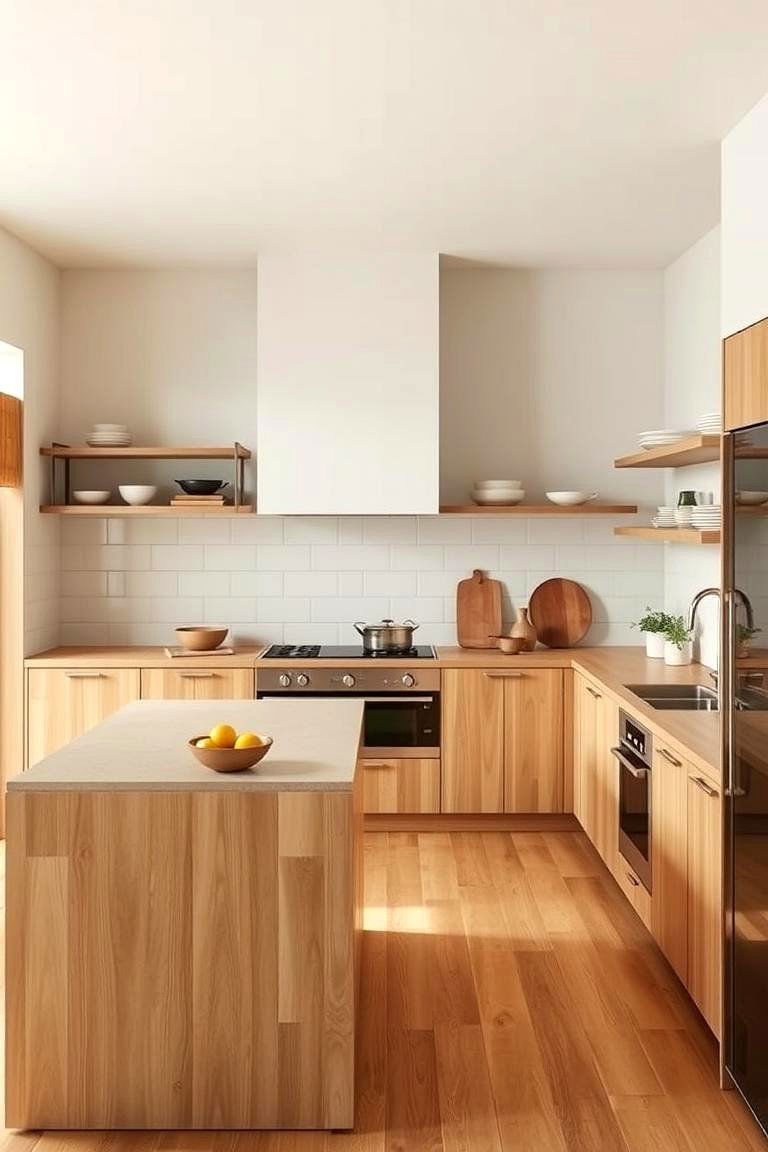
The layout of a Japandi kitchen is centered on functionality. Design your space with an open layout that promotes movement and ease of access. A central island or bar-height counter can create zones for cooking, dining, and entertaining while keeping everything within reach. The key is to keep the design simple, intuitive, and efficient.
14. Bamboo Accents
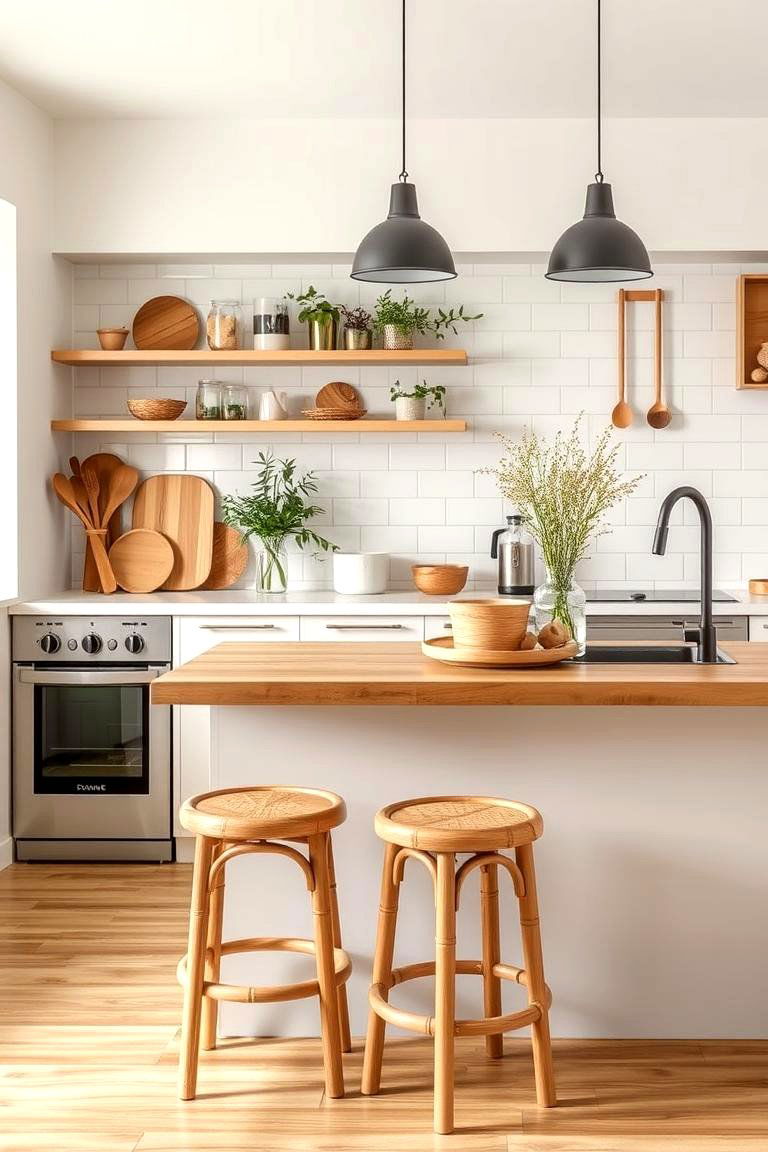
Bamboo is a sustainable material that fits perfectly within the Japandi aesthetic. Incorporating bamboo elements, such as stools, blinds, or cutting boards, helps bring a sense of nature indoors. The light color of bamboo complements the neutral tones of a Japandi kitchen, while its strength and durability make it a practical addition.
15. Textured Wall Features
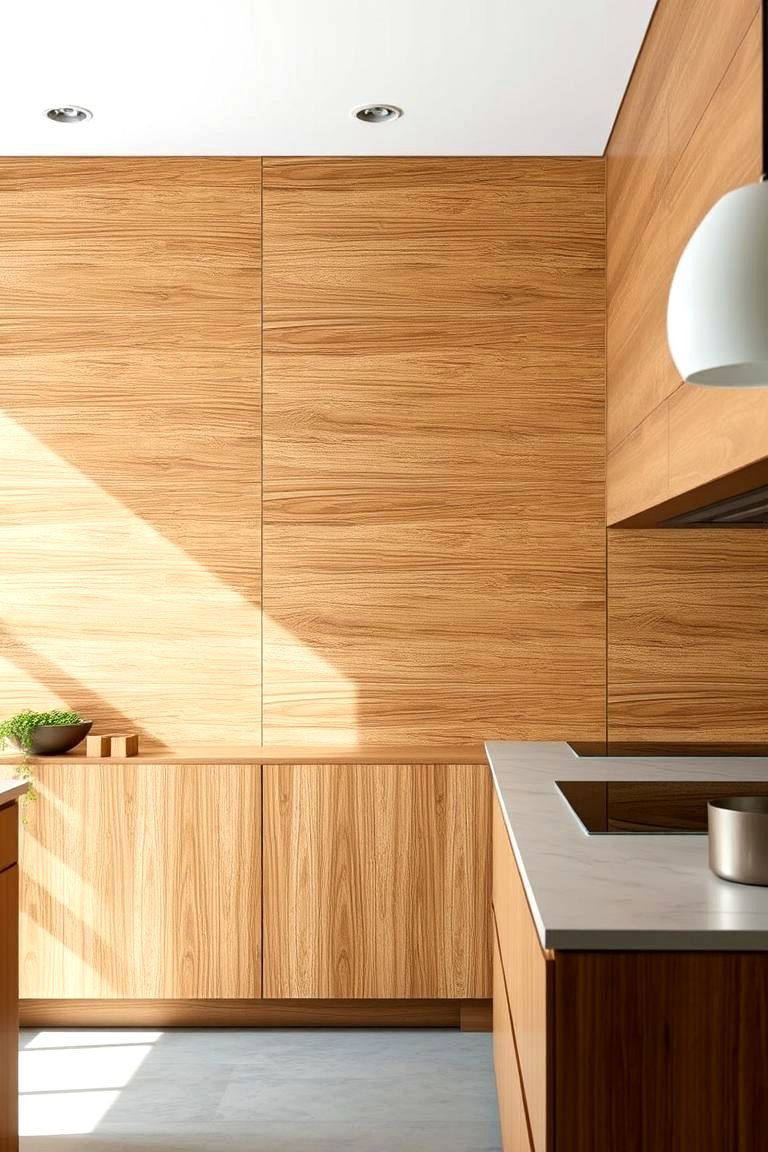
Add dimension to your kitchen walls with textured finishes. A stone, wood panel, or clay accent wall can add visual interest while maintaining the minimalist feel. Textures like these create a subtle contrast that enhances the organic beauty of the space without overwhelming it. Keep the textures understated to retain a serene, calming environment.
16. Natural Stone Countertops
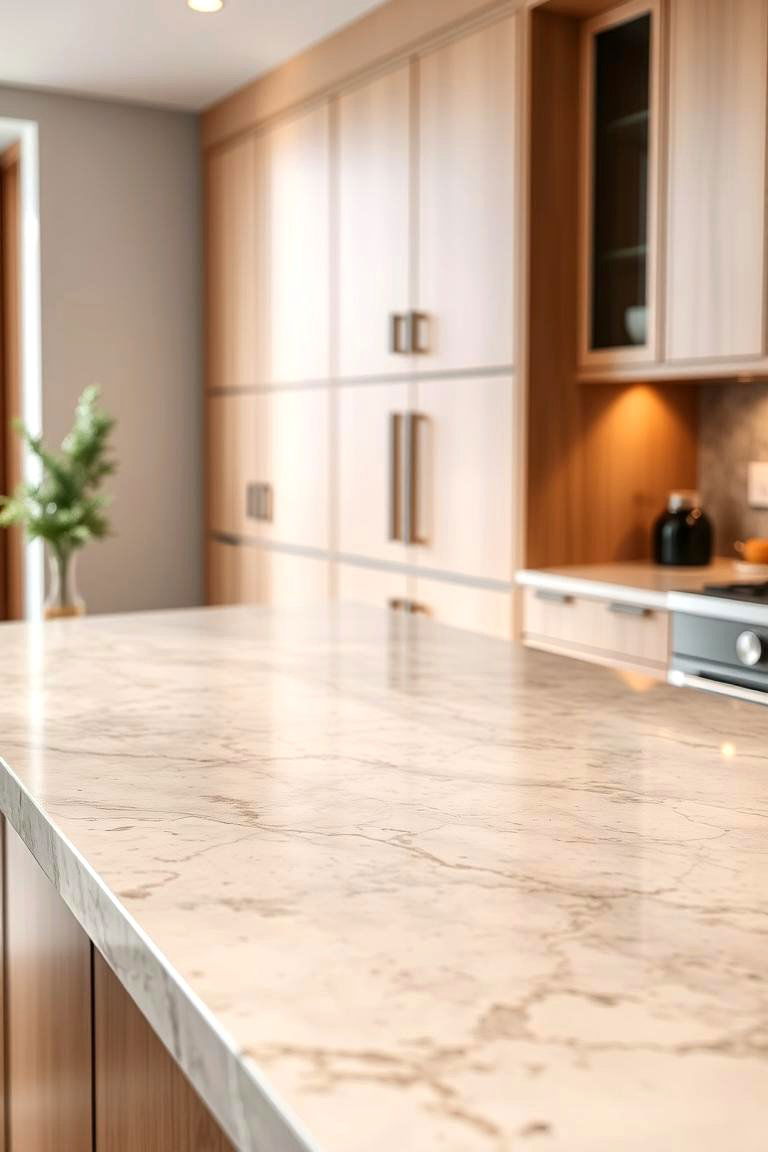
Natural stone countertops, like marble or granite, provide both functionality and style in a Japandi kitchen. Their clean surfaces and timeless appeal make them a great choice for cooking and entertaining. The natural veining of the stone adds visual depth and texture, while its durability ensures the countertop stands the test of time.
17. Multi-Use Spaces
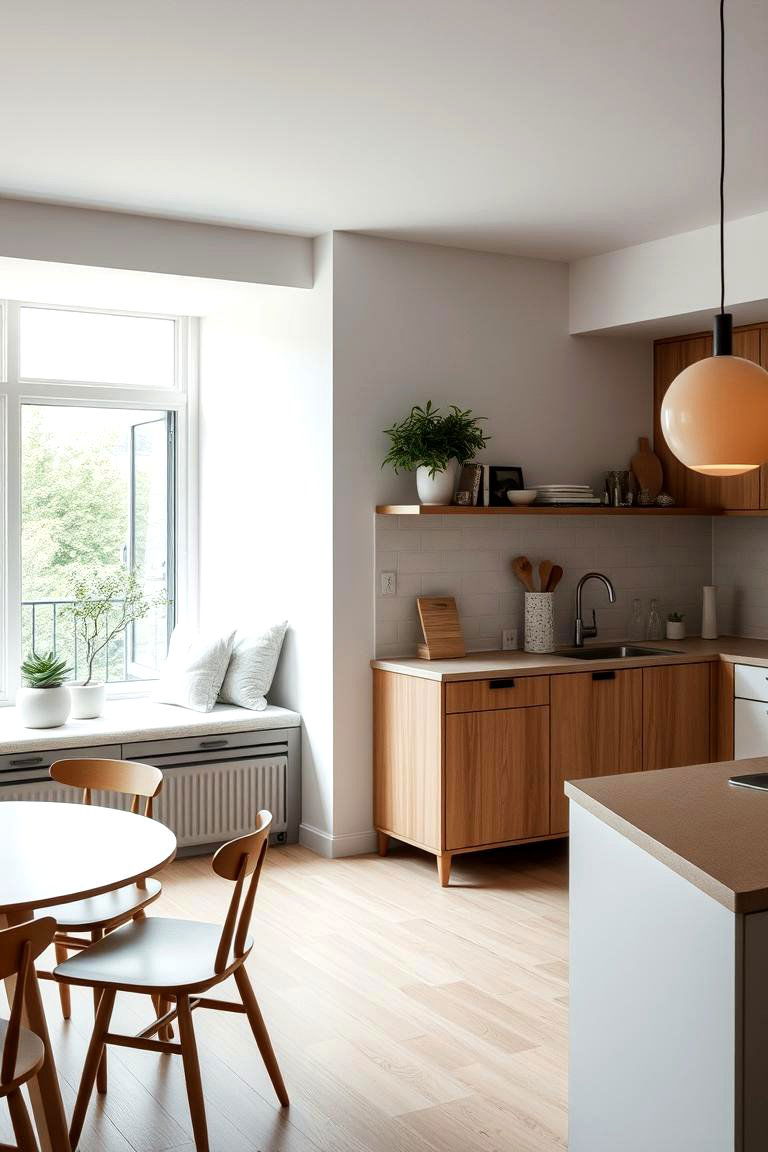
A Japandi kitchen isn’t just about cooking; it’s about creating a space that can serve multiple purposes. Consider designing a kitchen that incorporates a dining area, workspace, or even a reading nook. This multipurpose approach helps maximize space while ensuring the kitchen remains a central, functional part of your home.
18. Hidden Trash Solutions
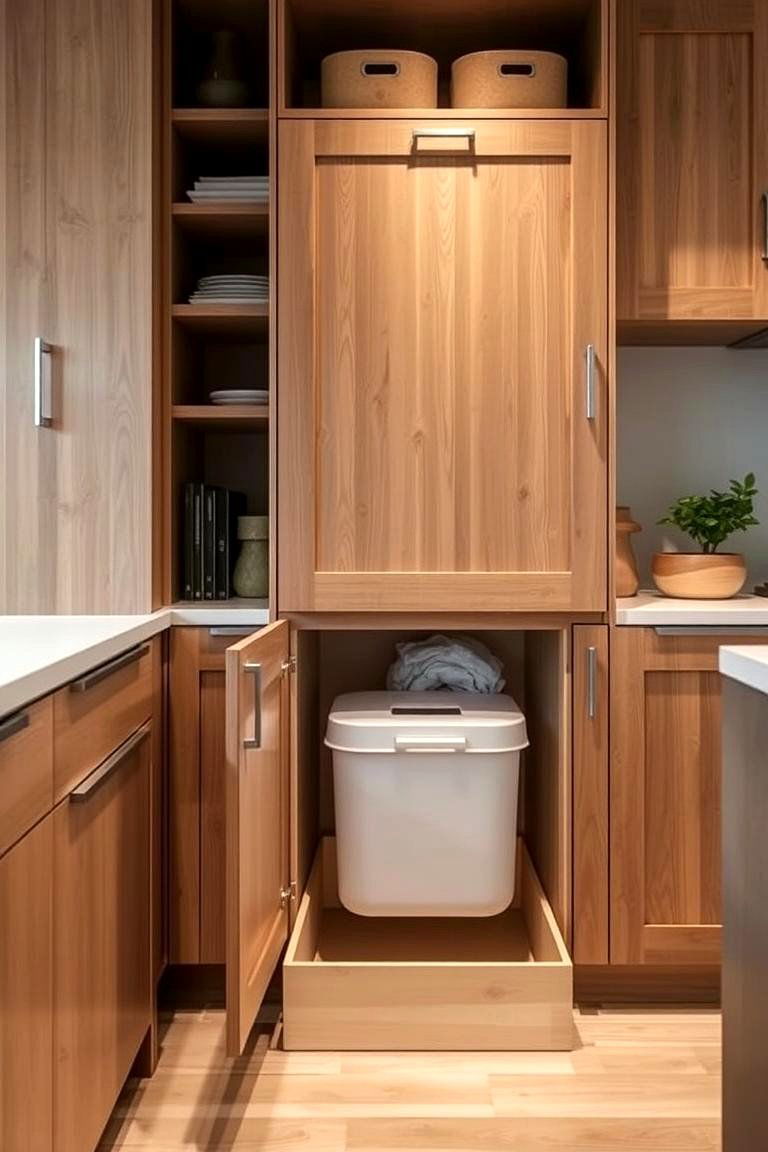
Incorporating hidden trash bins is a smart way to maintain a clean and orderly kitchen. Sliding drawers or pull-out bins help you hide trash while still making it easily accessible. By keeping trash out of sight, you contribute to the uncluttered, peaceful environment that is central to the Japandi style.
19. Floating Shelves
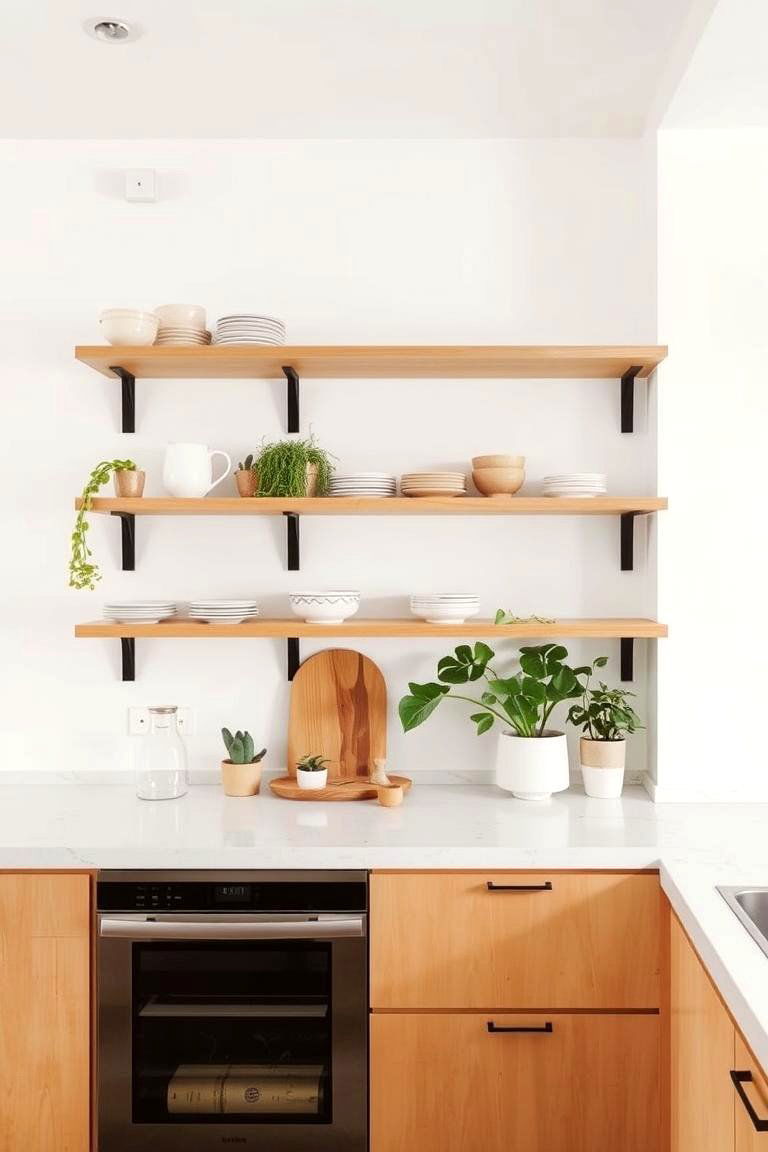
Floating shelves offer an elegant solution for storage in a Japandi kitchen. These shelves can be used to display a select number of decorative pieces or practical items like spices and dishes. Their minimalist design helps to maintain an open, airy feel while still offering functional storage.
20. Seamless Transitions
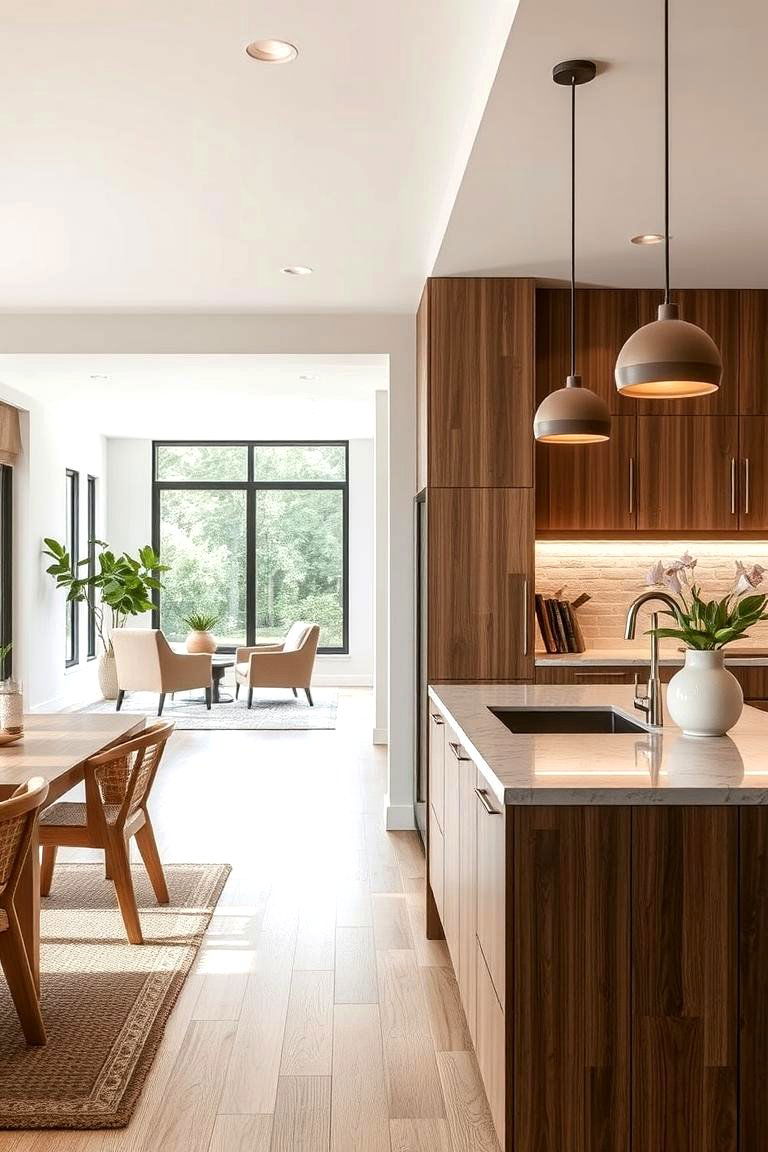
Japandi design emphasizes fluidity between spaces. Create seamless transitions between the kitchen and living areas by using similar materials, colors, and design elements. Open shelving, neutral tones, and natural finishes can help the kitchen feel like an extension of the living room, creating a cohesive flow throughout the home.
21. Simple Window Treatments

For a clean and uncluttered look, choose simple window treatments. Light, sheer curtains or minimalist blinds allow natural light to flood the space while maintaining privacy. These subtle additions support the serene and functional aesthetic that defines Japandi kitchens.
22. Scandinavian-Inspired Floor Tiles
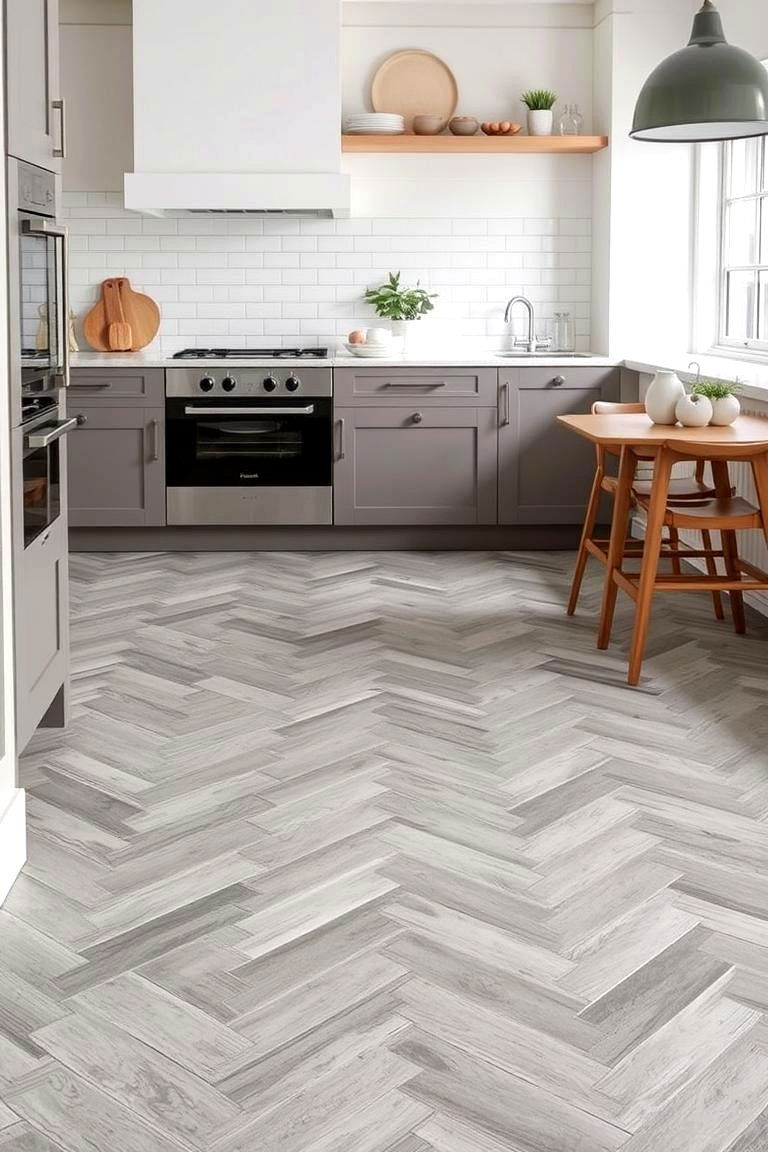
Scandinavian-inspired floor tiles, such as herringbone or simple geometric patterns, are an excellent choice for a Japandi kitchen. These tiles bring texture and personality to the floor without disrupting the overall minimalist vibe. Their clean lines and understated design complement the other natural elements in the space.
23. Dual-Tone Cabinets
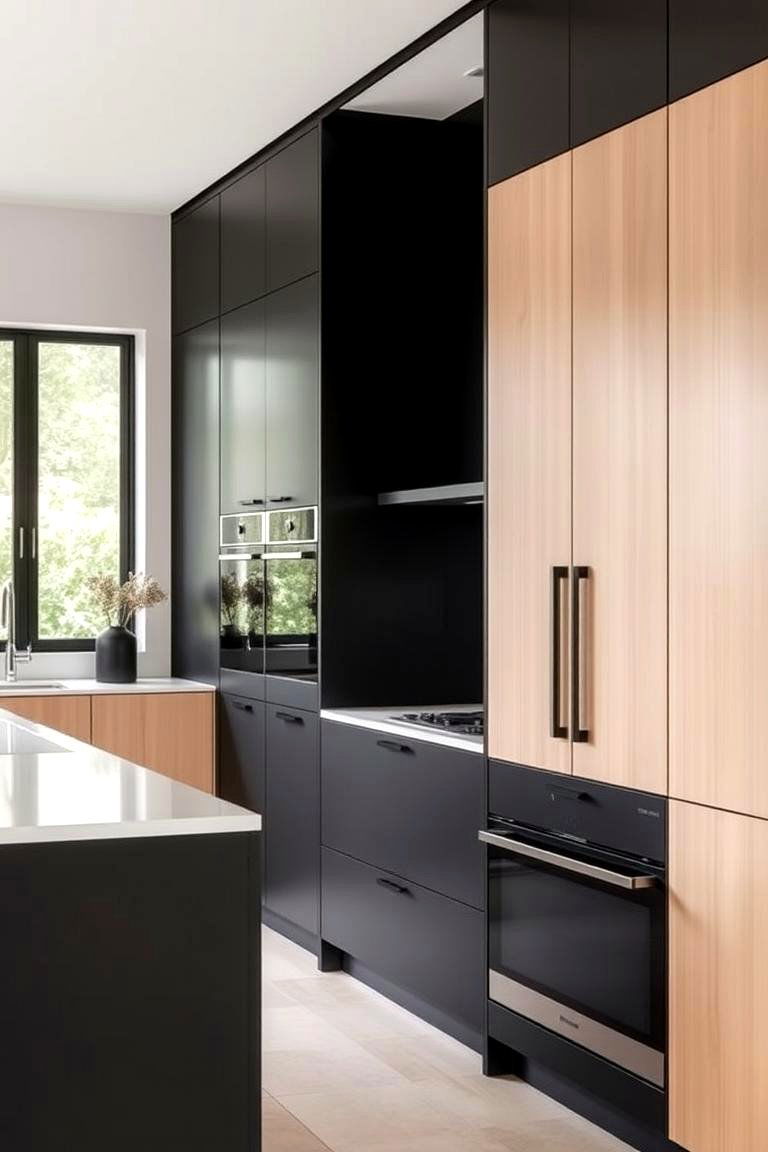
A subtle dual-tone cabinet design can add visual interest while maintaining the simplicity of a Japandi kitchen. Combine dark and light shades to create a balanced look that’s both modern and timeless. This technique adds a touch of sophistication without overwhelming the space.
24. Functional Work Zones
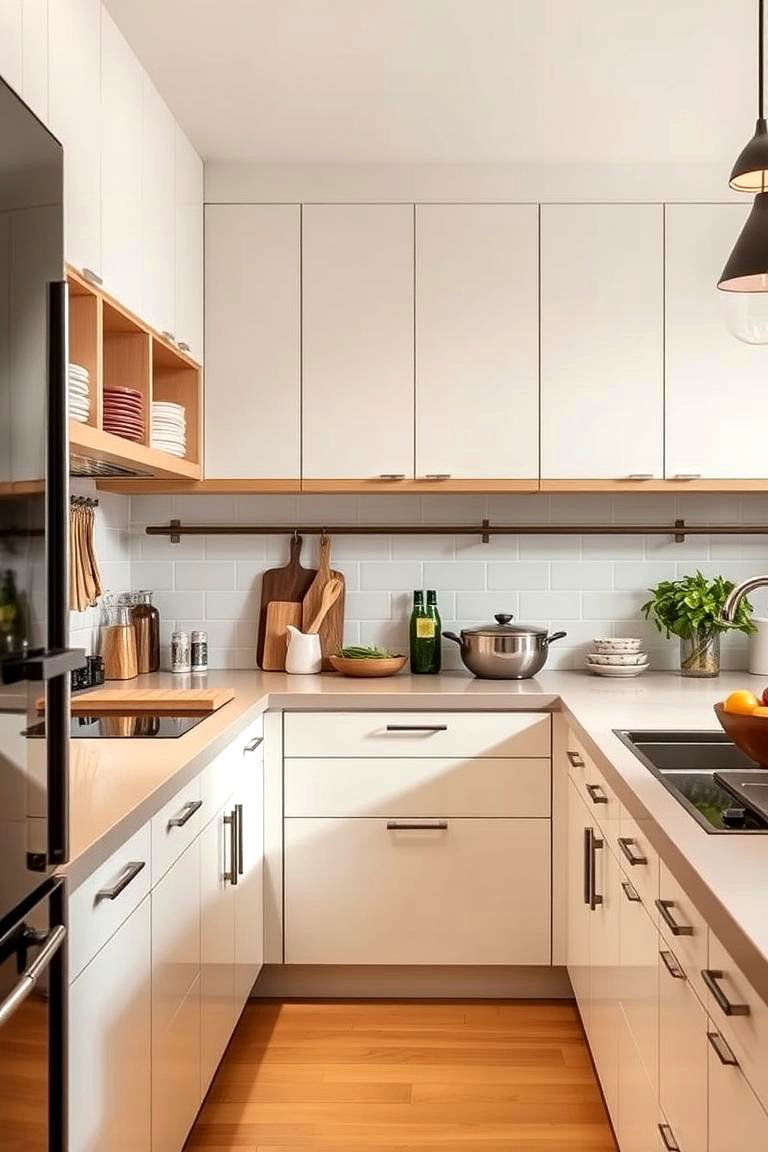
Japandi kitchens focus on creating efficient, purposeful work zones. By designing the space with clear areas for prep, cooking, and cleaning, you can enhance the flow of your kitchen. Keeping these zones distinct helps ensure that each part of the kitchen serves its function without contributing to clutter.
Conclusion:
Japandi kitchens are designed to foster simplicity, serenity, and practicality. By combining natural materials, minimalist design, and thoughtful layouts, you can create a kitchen that not only looks beautiful but also serves as a functional and calming space. Incorporating these 24 ideas into your kitchen can help you build a space that feels both timeless and modern.


